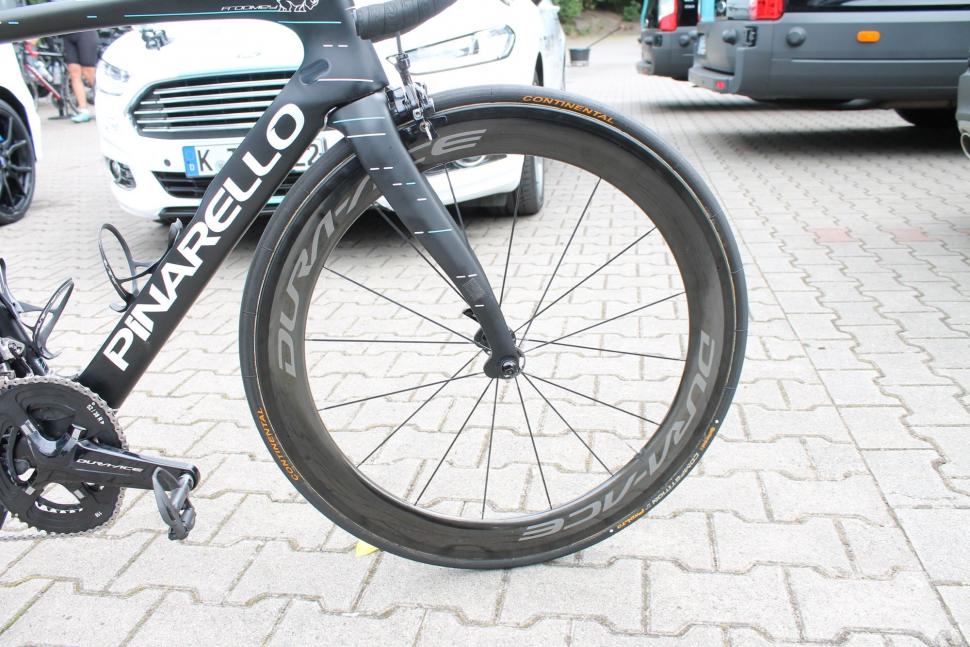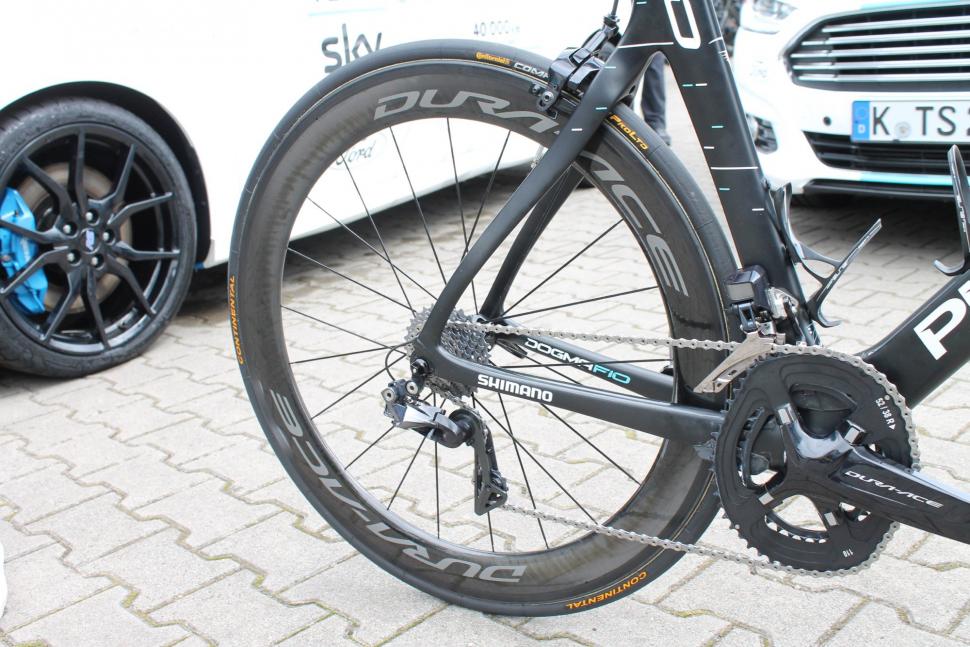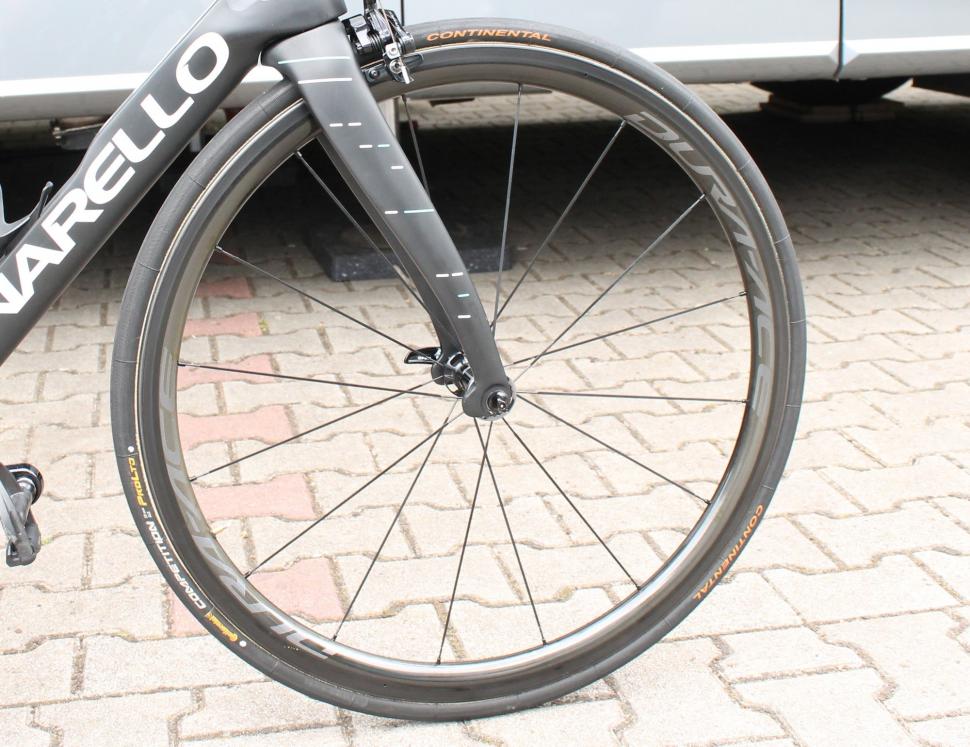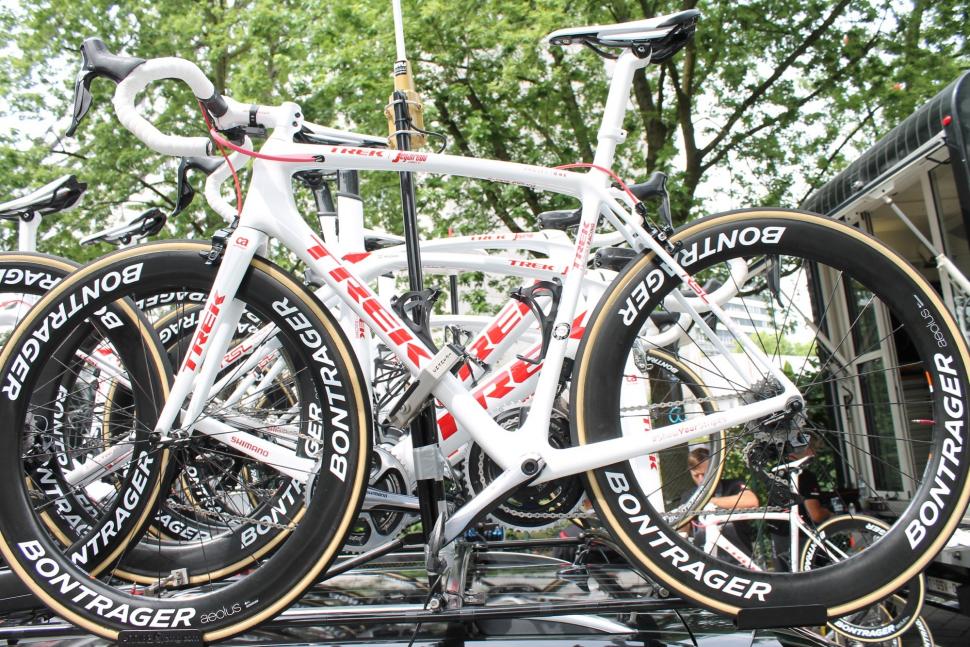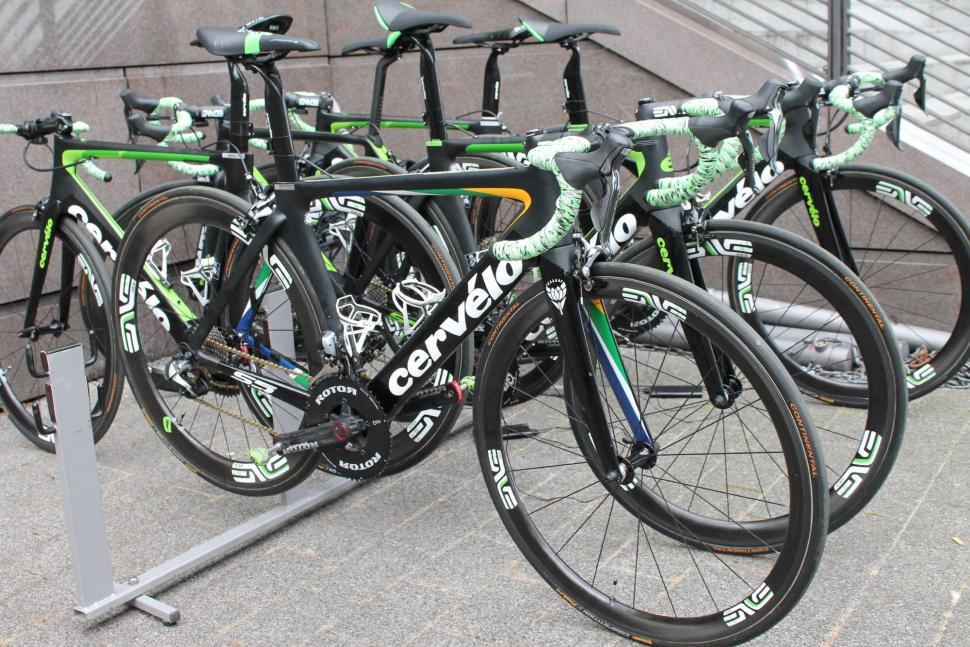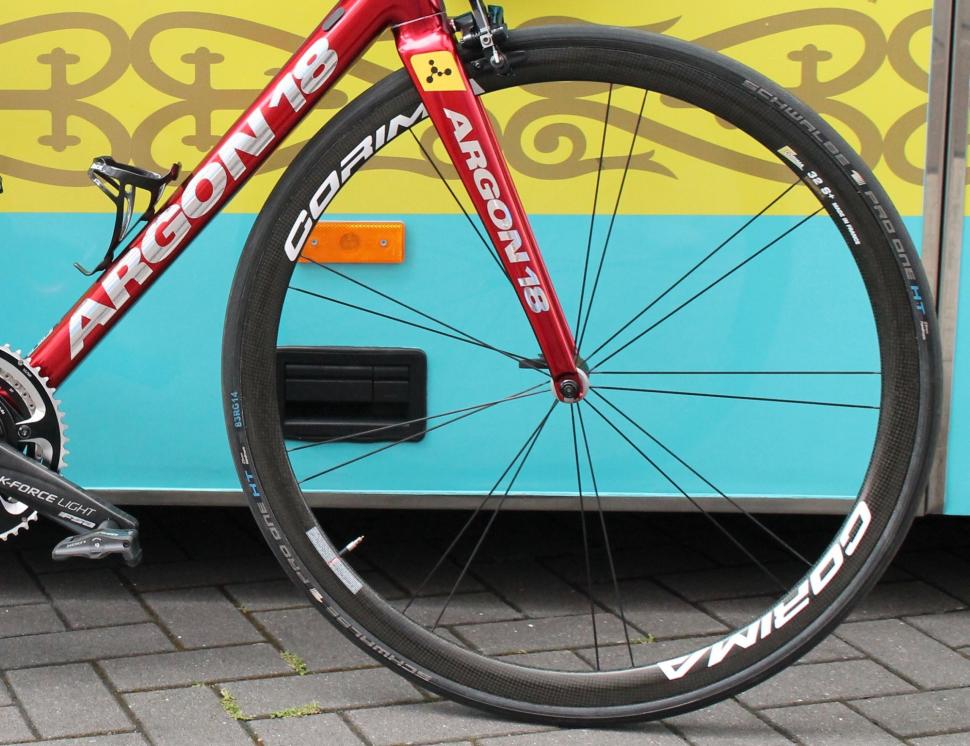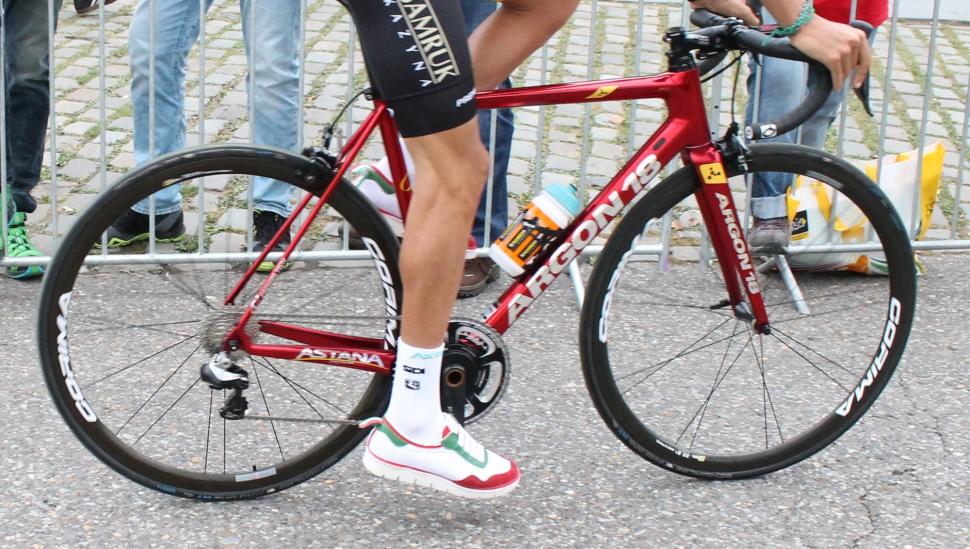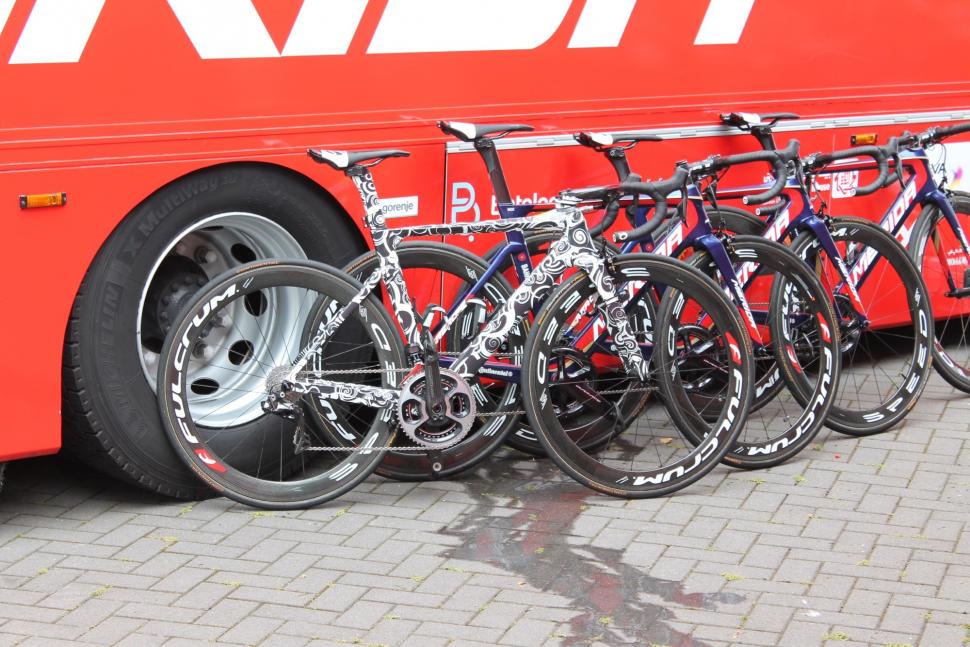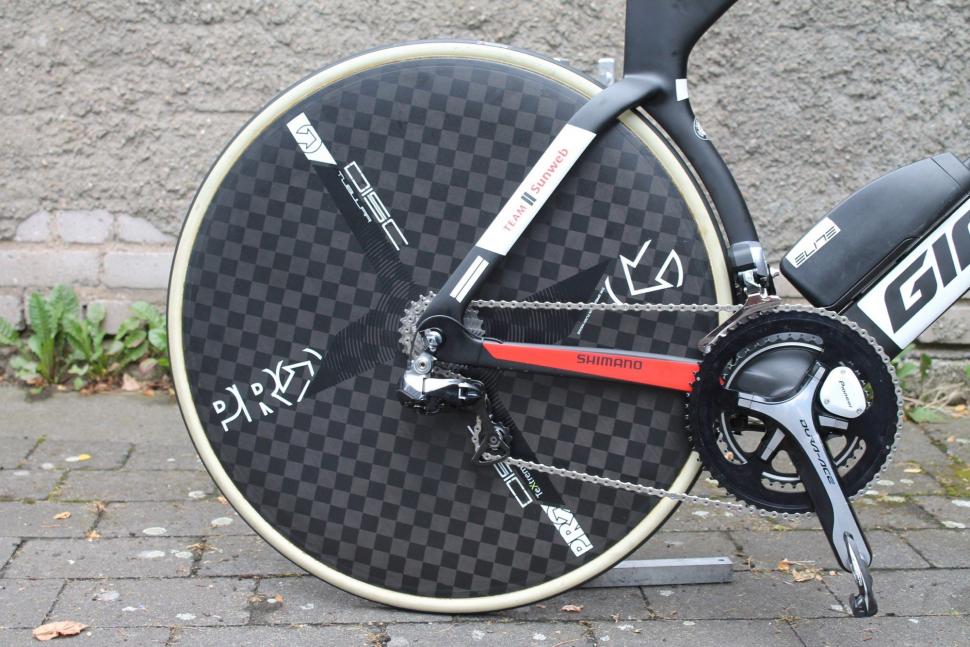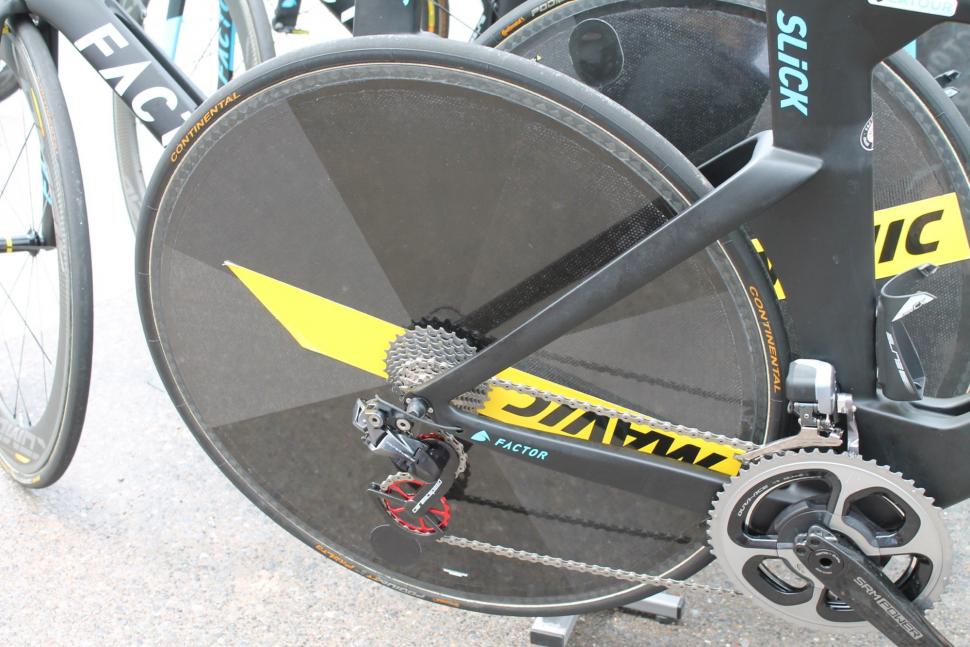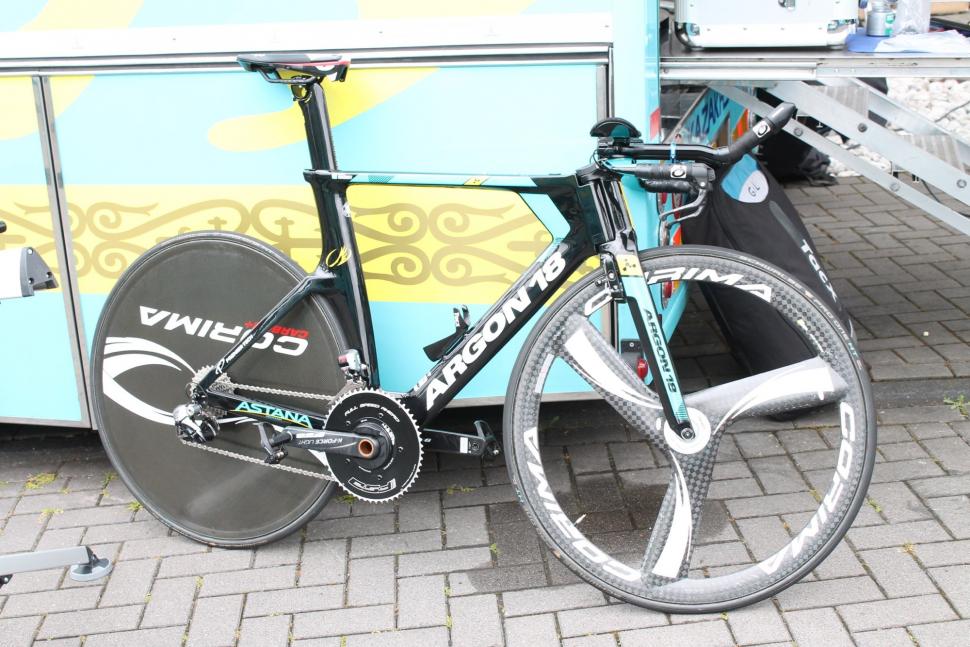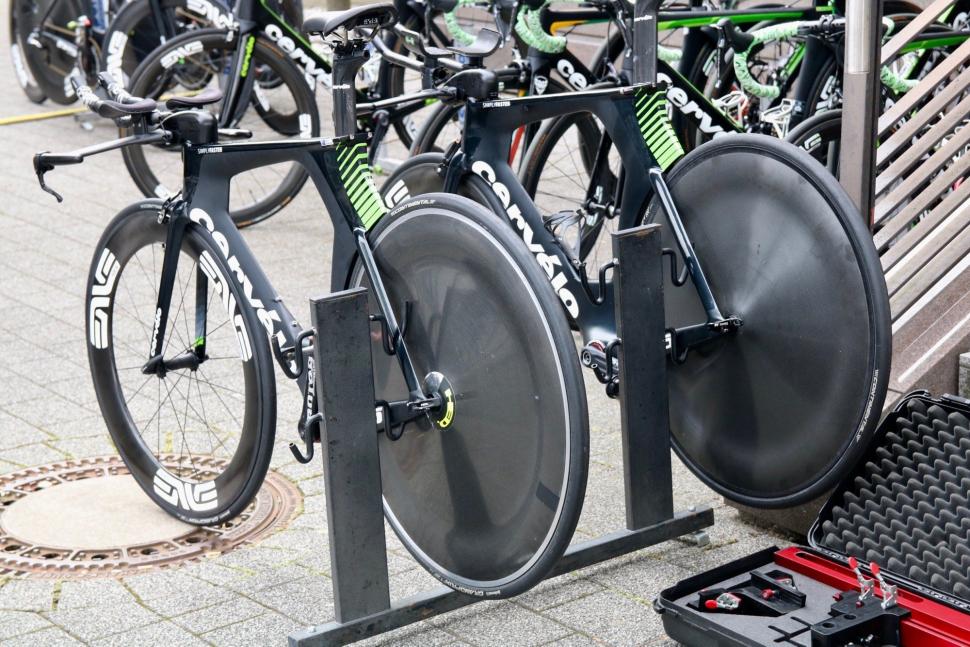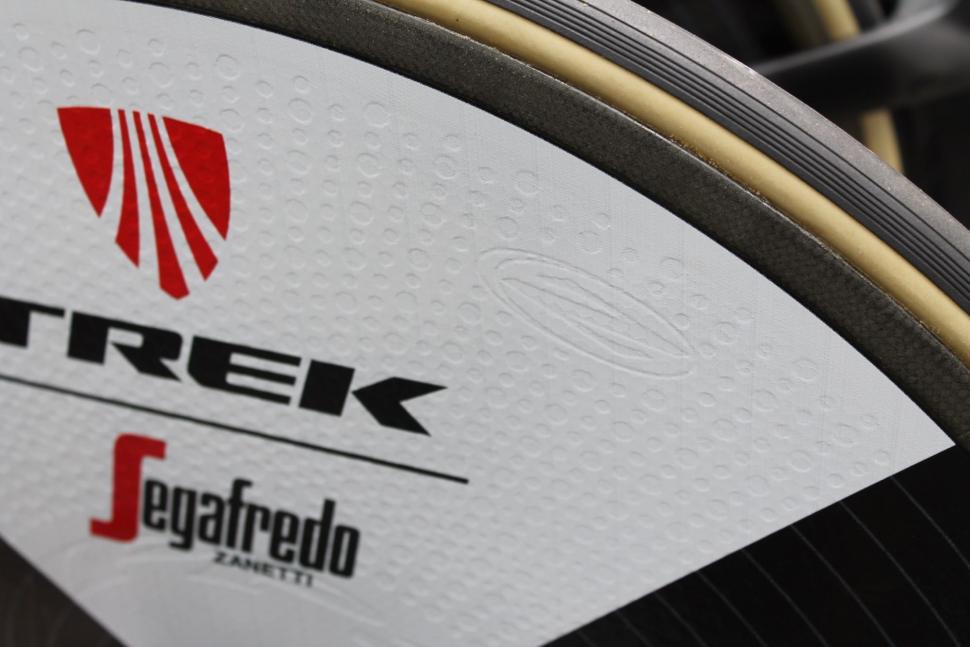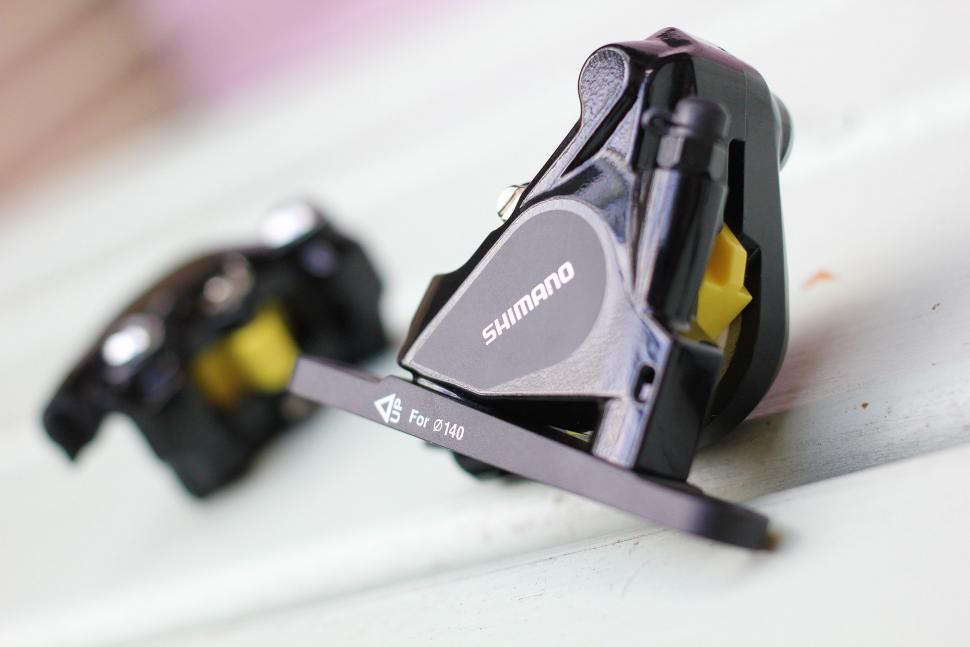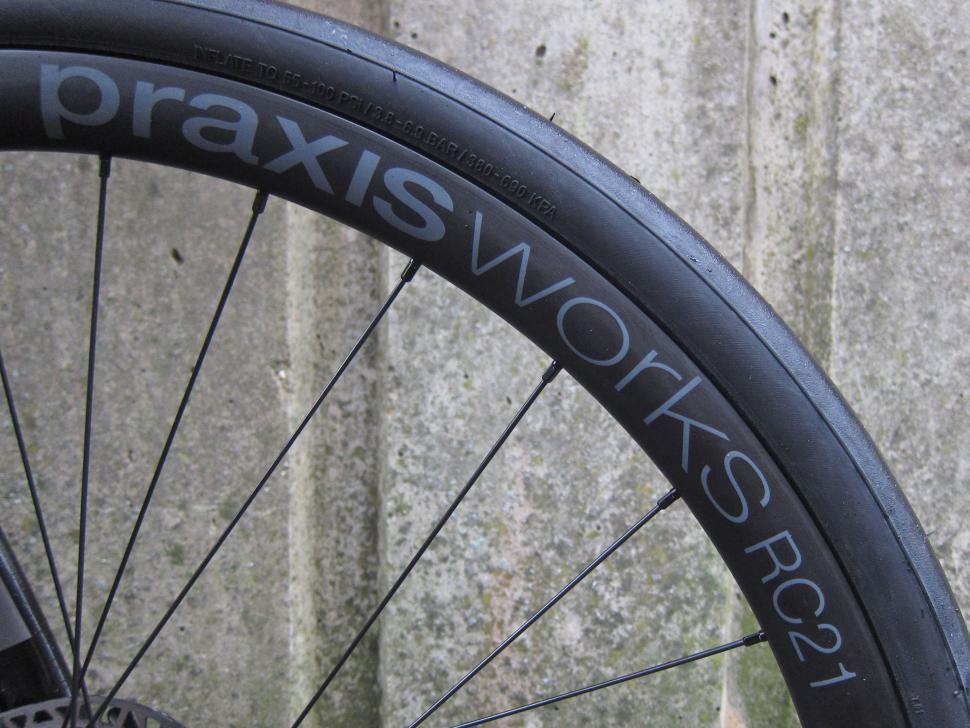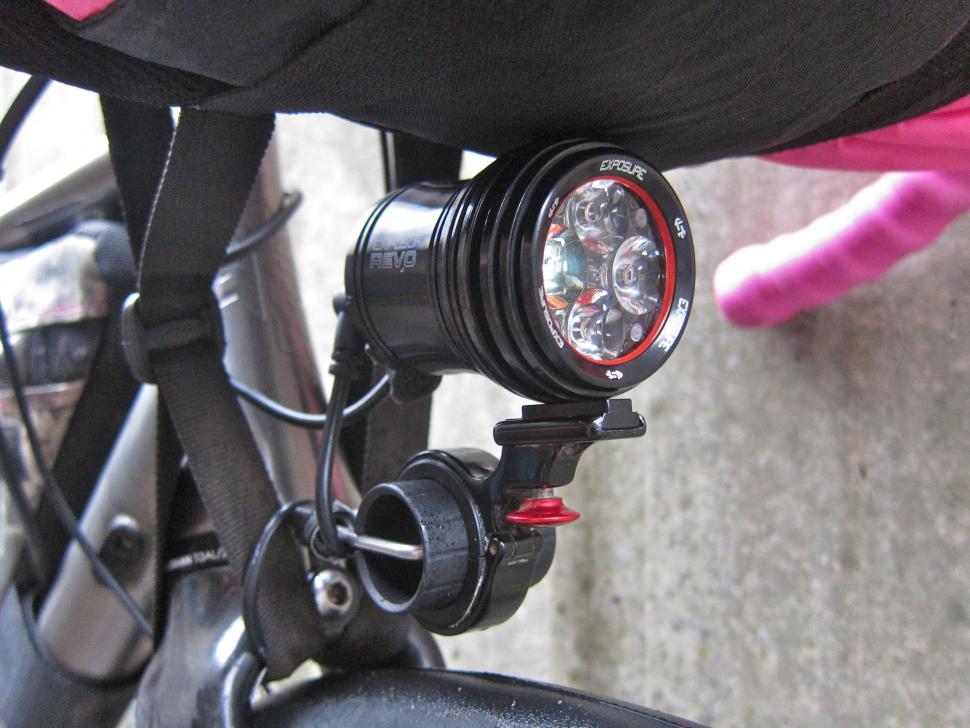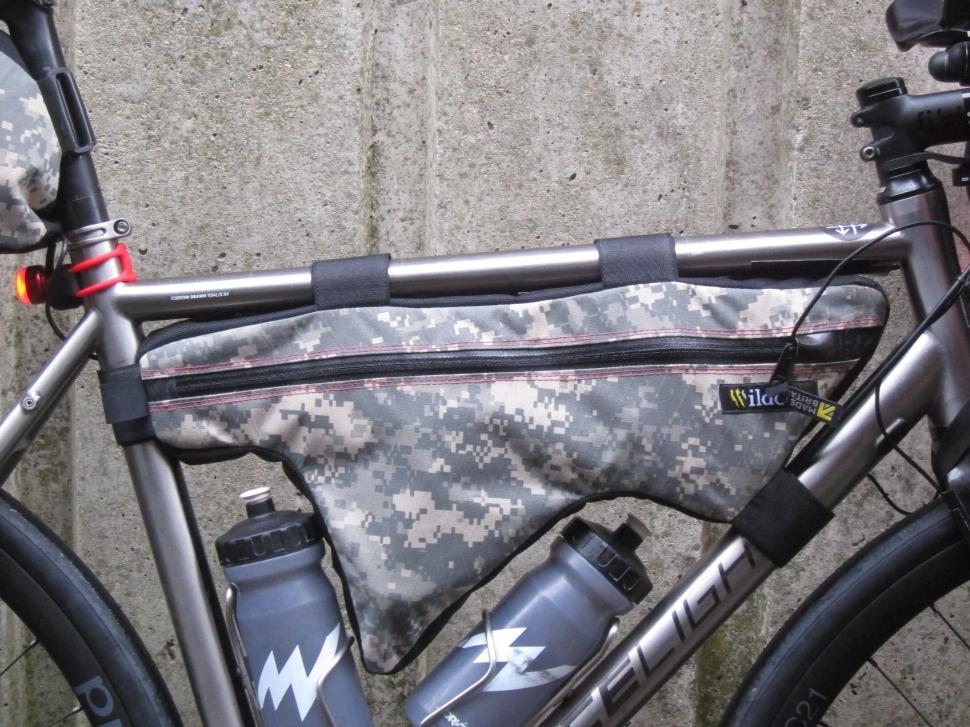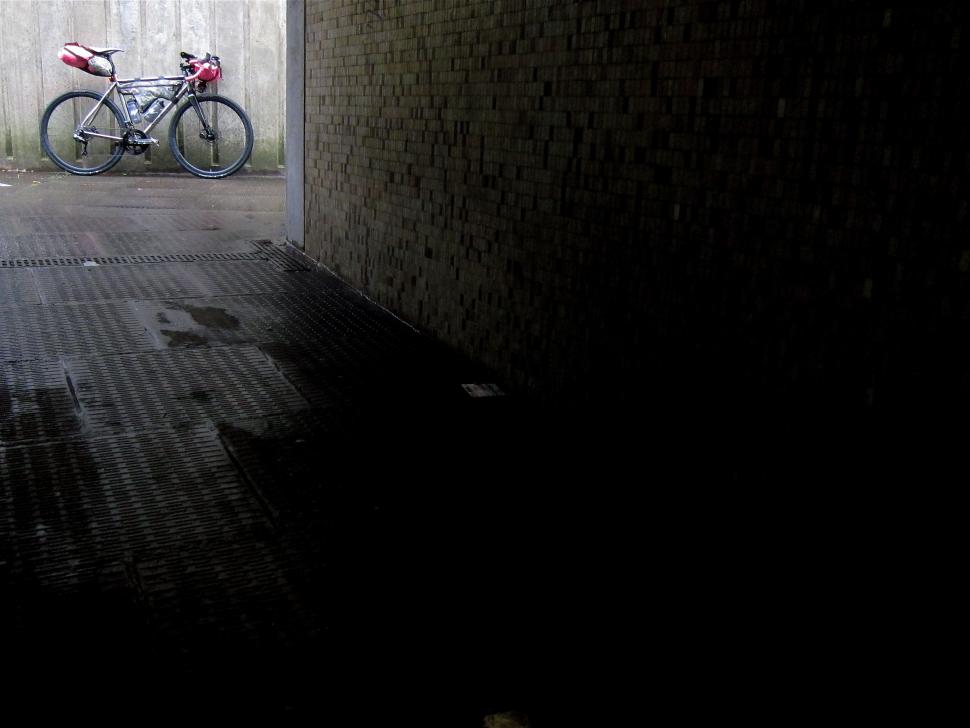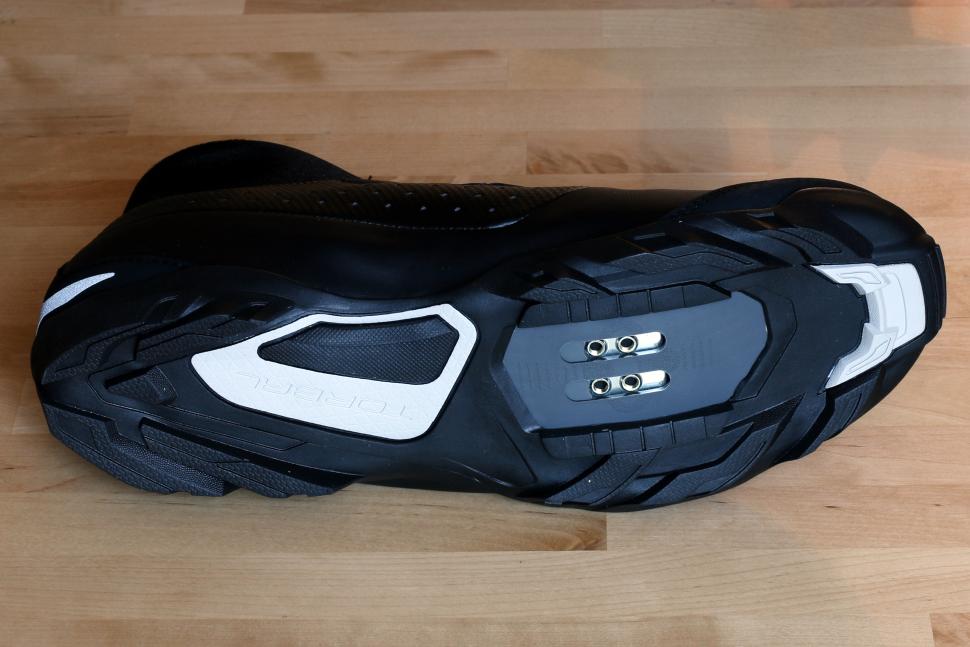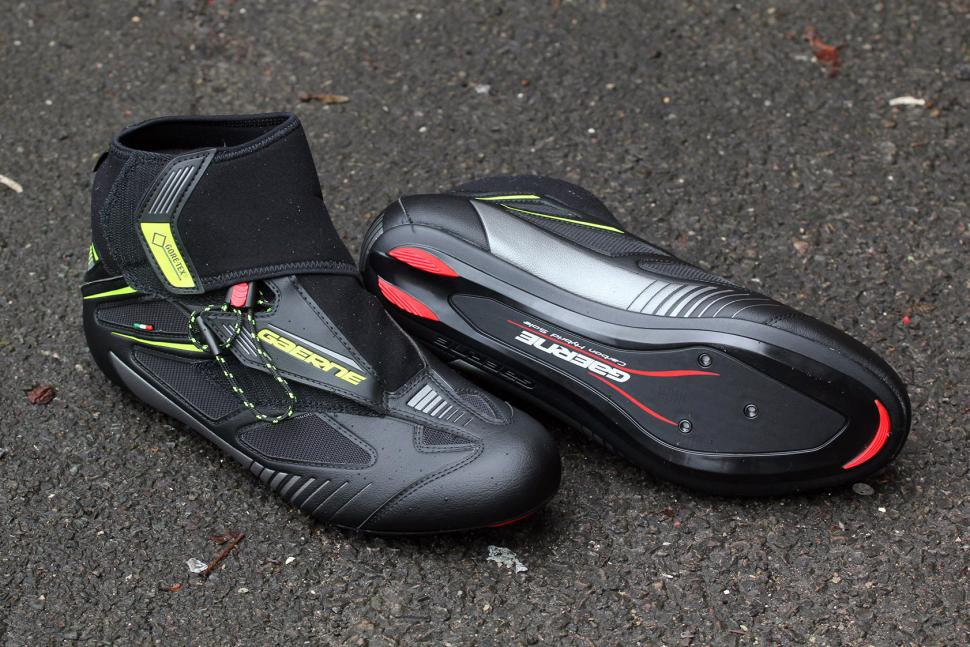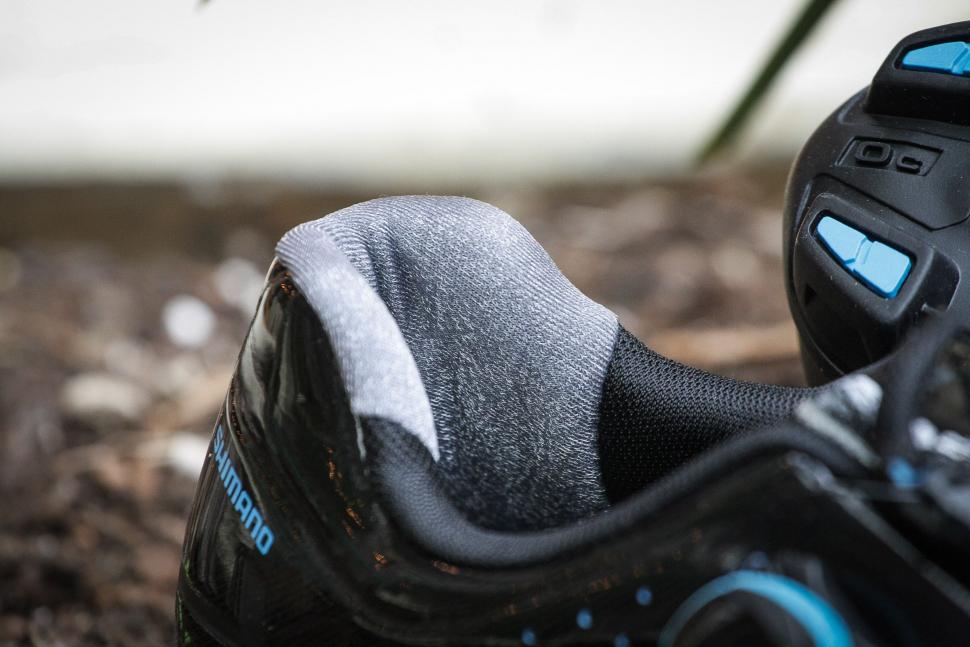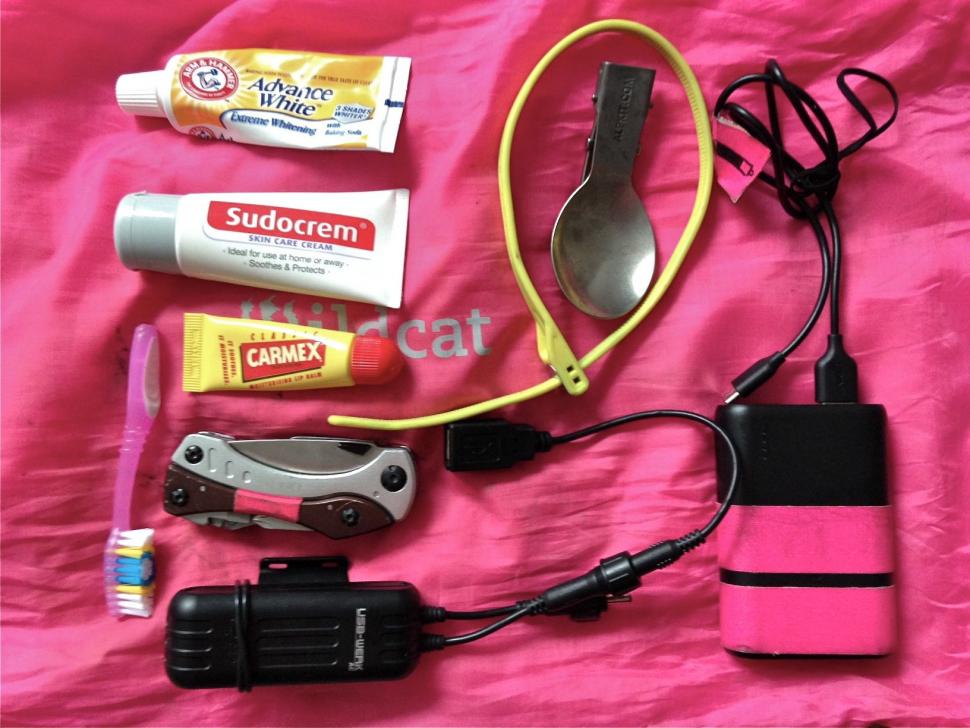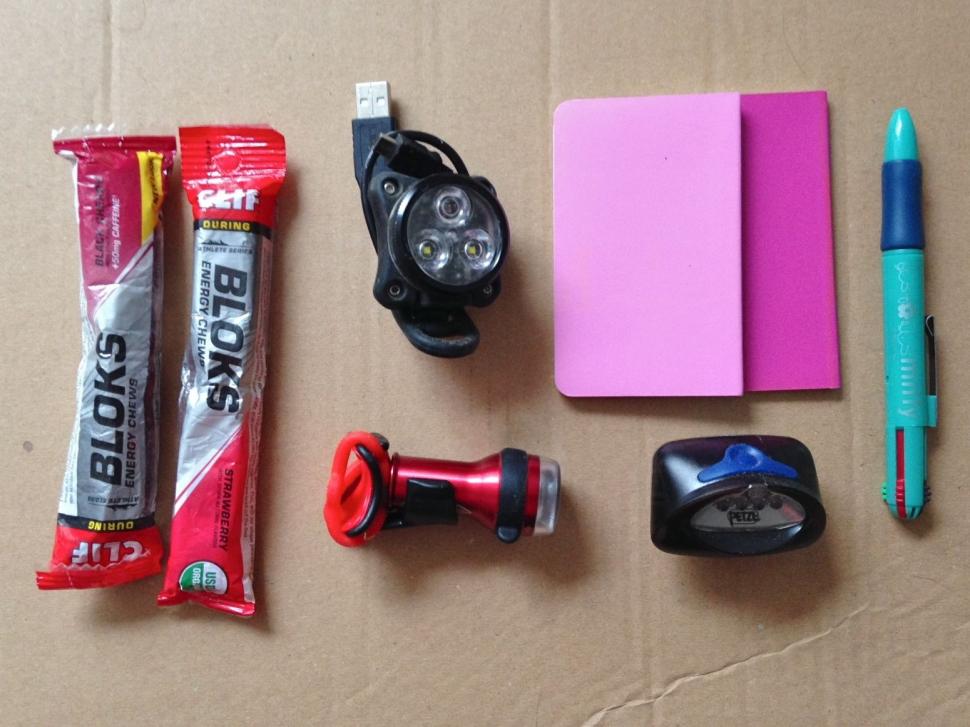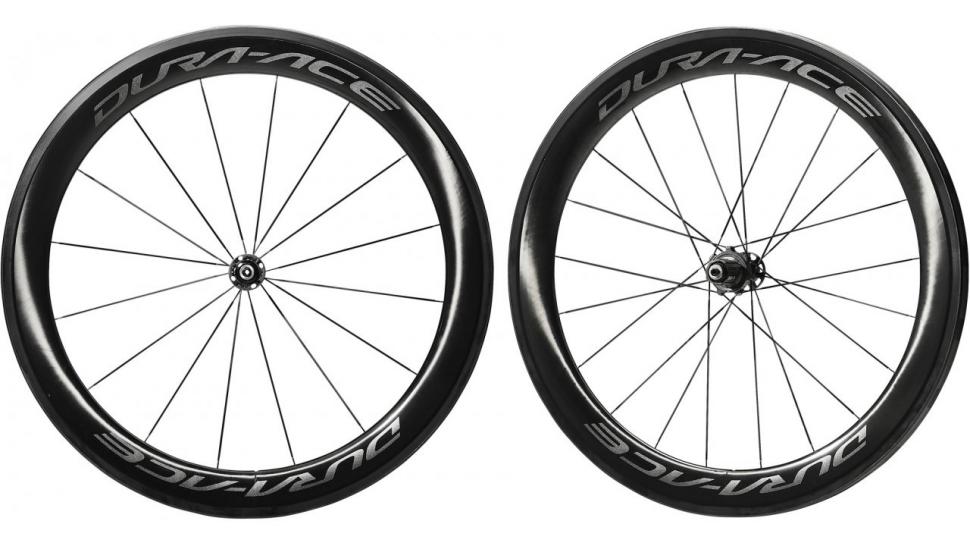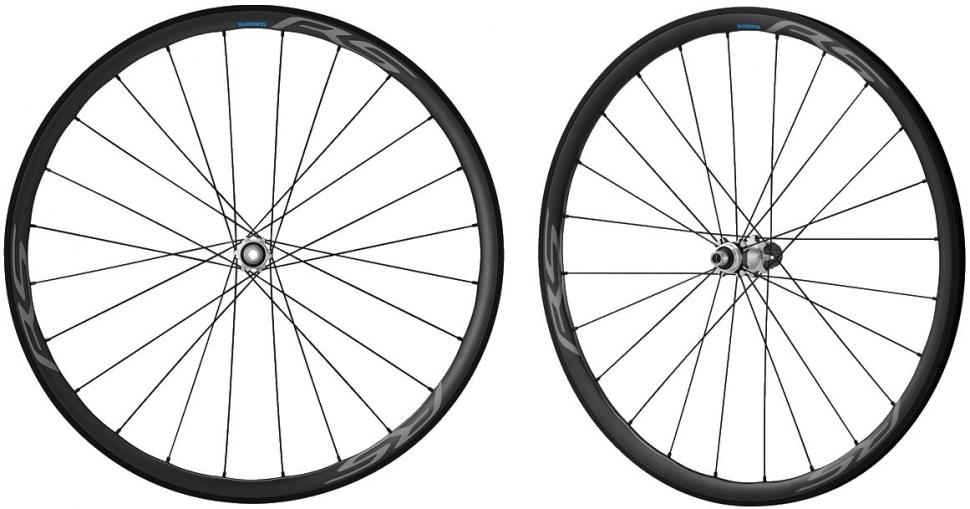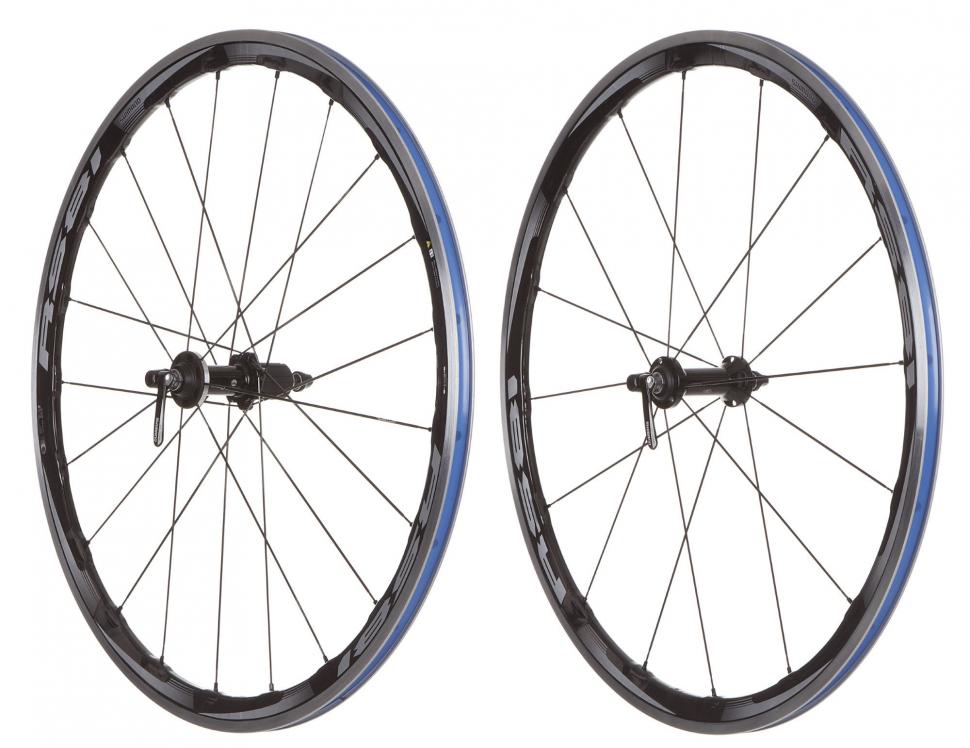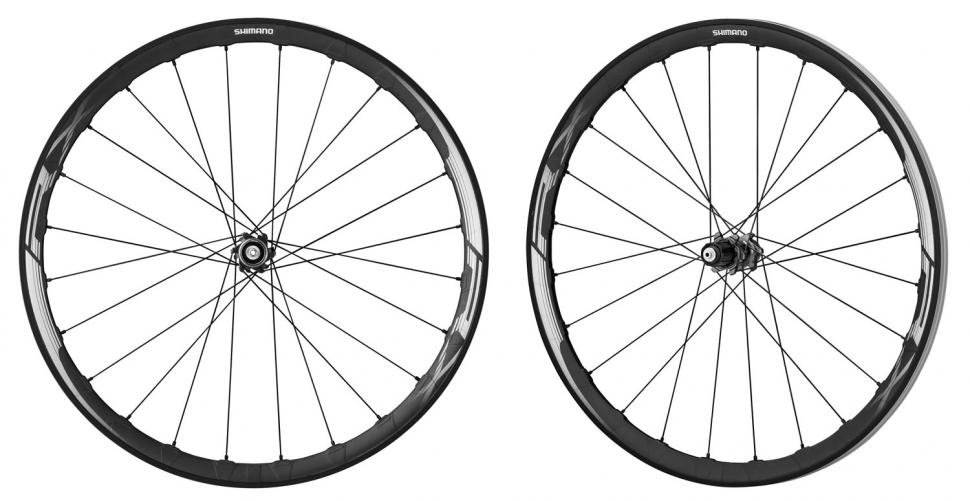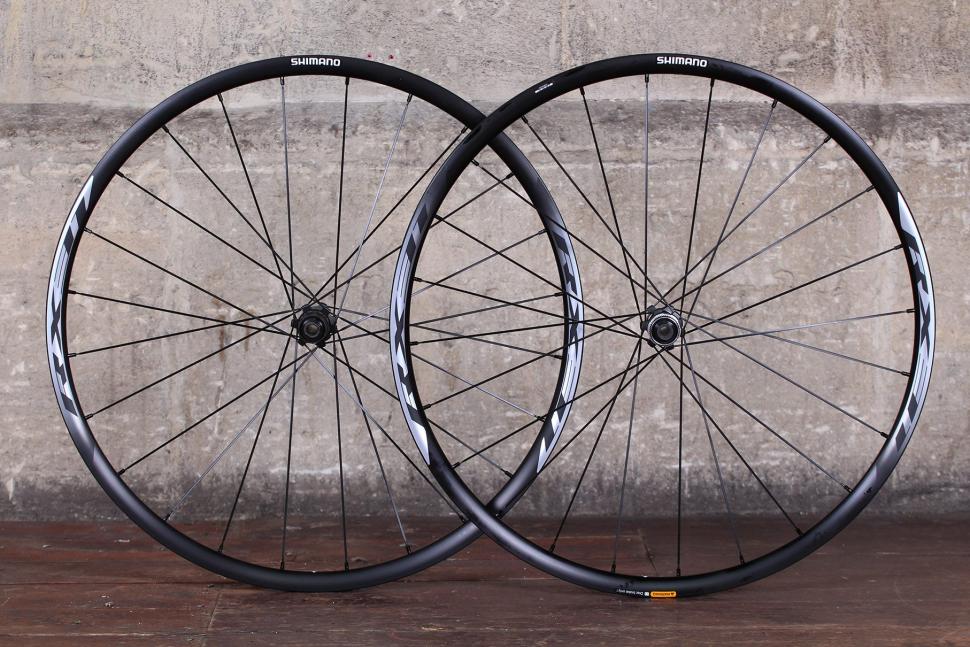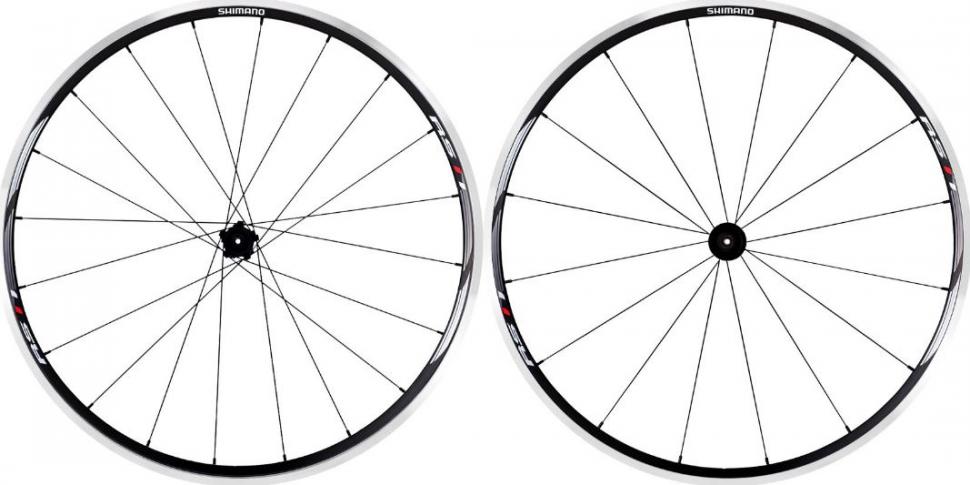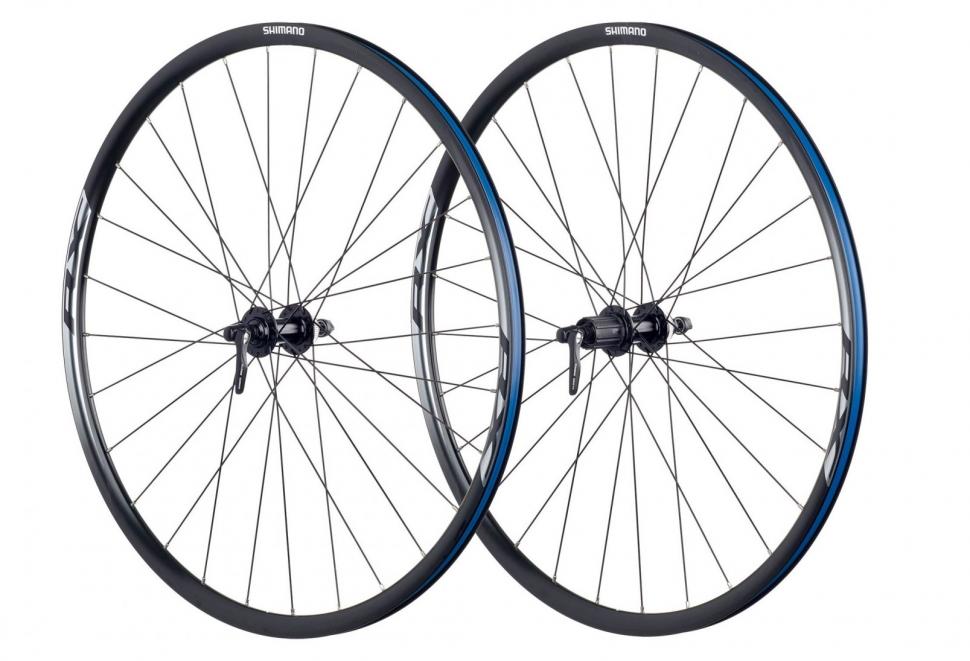Video: Marcel Kittel’s Tour de France stage winning Specialized S-Works Venge ViAS Disc
Five cool products coming soon to road.cc
Five cool products coming soon to road.cc
Great cycling deals on Shimano, Prologo, and PBK
The DealCatcher's back this afternoon with some more great cycling deals. Today's selection comes from three big retailers in the shape of Ribble Cycles, Chain Reaction Cycles, and ProBikeKit.com.
The first of the day's deals is a huge discount on Prologo's 2017 Zero II Space Saddle over at Ribble Cycles.
Second up is Shimano's RX830 over at Chain Reaction Cycles which has seen a 13% discount.
Finally, PBK's great-looking High Cuff race socks are allegable for an extra 25% off with the coupon code PBKOB25, what're you waiting for?
Ribble Cycles
42% off Prologo's 2017 Zero II Space Saddle
WAS £99.99 | NOW £57.99
Prologo's Zero range are designed to be flat and prioritise speed and access to a variety of riding positions.
Perfect for CX riding, or short quick commutes that require you to be out of the saddle, and in the drops, and bombing up hills.
We've got a bit of experience with Prologo's saddles, too. The 2016 Scratch 2 Space got a very impressive road.cc 8/10. Check out the review below:
- Read more: road.cc's Prologo 2016 Scratch 2 Space Tirox Saddle review
Chain Reaction Cycles
13% off Shimano RX830 Road Disc Wheelset
WAS £749.99 | NOW £649.99
Shimano's RX830 is a wonderfully slim aerodynamic carbon tubeless-ready wheelset that give you plenty of access to wider tyres.
The hubs are apparently very similar to Shimano's excellent Ultegra wheels, but have the benefit of XT mountain bike hub sealant to keep your wheels protected from any road muck that you can possibly ride them through.
In fact, the wheels are close siblings with the RX31 wheels which we gave a road.cc 8/10 to. Check the review out for those below:
- Read more: road.cc's Shimano RX31 Wheelset review
ProBikeKit
10% off PBK Race High Cuff Socks
WAS £9.99 | NOW £8.99
NOW £6.74 - WITH CODE: PBKOB25
Our final deal of the day are a wonderfully good-looking pair of socks.
Not only are they perfect for race days, and look phenomenal, they're an absolute bargain!
If you include the coupon code 'PBKOB25' when you get to the checkout, you'll get an extra 25% off the 8.99 asking price!
Tour Tech 2017: Thomas Voeckler’s BH G7 Pro
Tour Tech 2017: Thomas Voeckler’s BH G7 Pro
Tour Tech 2017: The wheels the pros are riding – Froome, Kittel, Sagan, Cavendish and more
There are loads of different wheels on display at the Tour de France, riders making their selection according to the type of stage they’re riding, the terrain and the conditions they’ll face.
Mid to deep-section rims have become increasingly popular over recent years as teams focus more on aerodynamics, and it’s now unusual to see anything less than about 35mm.
Not surprisingly given the number of teams Shimano sponsors, Dura-Ace wheels are everywhere in the pro peloton. This is Chris Froome’s Pinarello Dogma F10 fitted with C60s, the 60 referring to the rim depth in millimetres. Shimano’s official weights for the tubular versions are 666g (front) and 830g (rear).
Geraint Thomas, who has now left the race due to injury, had the C40s on this bike. Despite the name, the rims on these are actually 37mm deep. They’re a little lighter at 637g (front) and 747g (rear).
The Emonda is Trek’s superlight race bike and this one from the Trek Segafredo fleet is fitted with fairly deep section Bontrager Aeolus wheels.
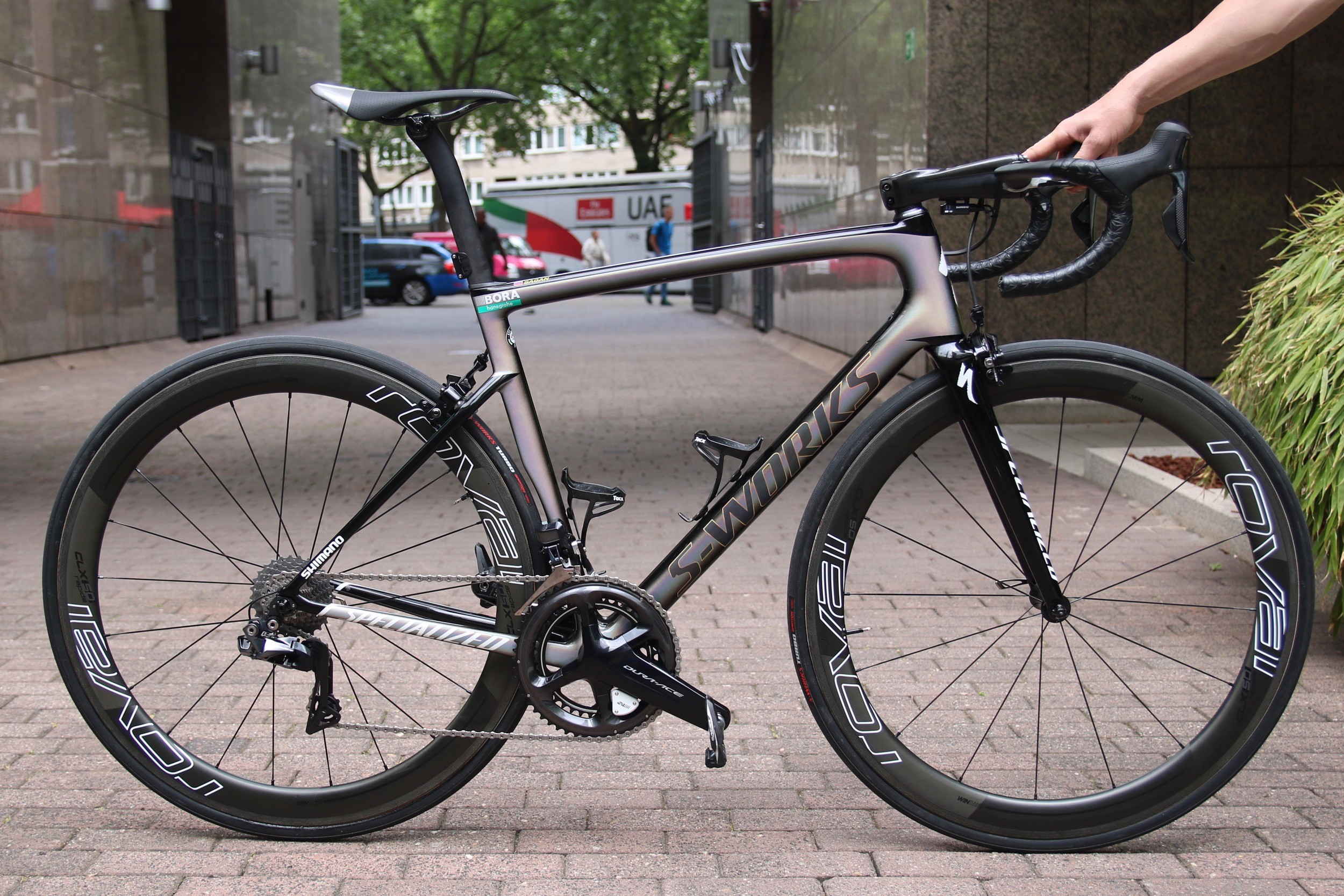
This is one of Peter Sagan’s Tarmacs fitted with mid-depth Roval CLX 50 wheels, Roval being Specialized’s wheels brand. The wheelset weighs sub-1,400g and uses CeramicSpeed bearings.
Sagan was rocking deeper section Roval CLX 64s decorated with world champion stripes at the team presentation in Dusseldorf.
The CLX 50s seem to be the most popular choice among the Specialized sponsored teams: Bora-Hansgrohe and Quick Step. Here they are again on Fabio Sabatini’s Venge, for example.
And Marcel Kittel uses the disc brake version.
Find out more about Roval CLX 50 wheels here.
Dimension Data use wheels from Enve. The SES 3.4, designed to be a climbing wheel that also offers an aerodynamic advantage, is a popular choice among the team.
Reinardt Janse van Rensburg has here gone for an SES 3.4 on the front and a deeper section SES 4.5 at the rear.
It looks like Mark Cavendish, who has now crashed out of the race, was doing the same on this training ride ahead of the start.
Astana use wheels from French brand Corima.
This is Fabio Aru’s Argon 18 Gallium Pro fitted with MCC S+ wheels. They’re full-carbon with 32mm deep rims.
Even the quick release lever is carbon. It’s the little things that count!
AG2R now rides Factor bikes fitted with Mavic wheels. These are Cosmic Ultimates with full-carbon 40mm deep rims. The spokes are carbon too, as is the front hub body. This all drops the weight down to a claimed 1,250g for the wheelset (555g front, 695g rear). The Cosmic Ultimate is the wheel that you’ll see used most frequently by Mavic sponsored pro teams because of its light weight and a depth that’s suitable for a variety of terrains and conditions.
Check out our guide to Mavic’s 2017 road wheel range.
Lotto Soudal use equipment from Campagnolo and this wheel on Marcel Sieberg’s bike is a Bora Ultra 50. The rim is 50mm deep, 24mm wide and uses Campag’s 3Diamant braking surface where “advanced machinery and state of the art diamond tipped precision tools eliminate imperfections caused by non-homogenous resin deposits and allows the brake pad to work directly atop specially woven carbon fibres”. The process is intended to improve the braking performance in both wet and dry conditions.
Ben Swift of UAE Team Emirates uses the same Bora Ultras with Campag’s G3 spoke pattern at the rear where the driveside is fitted with twice as many spokes as the non-driveside. The idea is that this handles the differing forces on the two sides of the wheel. Campag says that this system offers “better transfer of the driving torque, better lateral rigidity, reduction of the stress in the rear wheel spokes”.
Bahrain-Merida use wheels from Fulcrum, which is Campagnolo by another name. These Speed 55Ts have full-carbon rims the hubs and are fitted with CULT ceramic bearings.
Thomas Vockler has been rolling on Vision wheels. These aren’t labelled but they look like Metron 55 SLs with full-carbon rims that are 55mm deep and 24mm wide.
Aerodynamics is even more important in time trials. This disc wheel, on Warren Barguil’s Giant Trinity TT bike, is from Pro, which is a Shimano brand.
He has a 3-Spoke Textreme wheel on the front.
Loads of different disc wheels were used on the short, flat time trial on the opening day of this year’s Tour. This is a Fulcrum Speed 360T on a Wanty-Groupe Gobert Cube. Despite appearances it weighs only 865g although, obviously, a disc wheel is all about aerodynamics as opposed to weight.
This is a Mavic Comete on one of AG2R’s Factor Slick TT bikes.
And this is a Corima C+ Disc on the back of Dmitriy Gruzdev’s bike with a 3 Spoke HM carbon wheel up front.
Dimension Data use wheels from Enve, but Enve doesn’t make a disc wheel so those are HED wheels with most of the decals removed on the back of these TT bikes.
That looks like a logo-less HED on the back of Matteo Trentin’s Specialized Shiv too. The rest of the Quick Step’s wheels are from Roval.
It’s a similar situation over at Trek Segafredo where Zipp disc wheels get Bontrager logos. Sneaky!
Exciting new products... that you can't actually buy yet
Exciting new products... that you can't actually buy yet
Tour Tech 2017: Power meters of the peloton
Tour Tech 2017: Power meters of the peloton
Five cool products coming soon to road.cc
Five cool products coming soon to road.cc
Tour Tech 2017: Shifters the pros are using
Tour Tech 2017: Shifters the pros are using
Retro: Shimano and Campagnolo's greatest design blunders
Retro: Shimano and Campagnolo's greatest design blunders
Tour Tech 2017: pedals of the peloton
Tour Tech 2017: pedals of the peloton
Head to head: Shimano 105 v SRAM Rival 22 — how do the two cheapest 11-speed groupsets stack up?
If you’re choosing between Shimano 105 and SRAM Rival 22 groupsets, here’s everything you need to know in order to make the right decision.
Starting right at the beginning, a groupset is a component manufacturer’s collection of mechanical parts, usually covering the derailleurs, shifters, brakes, chainset, bottom bracket, cassette and chain. Brands group these parts into various different levels. 105 and Rival 22 are the third tier road groupsets from their respective manufacturers.
Shimano 105 is much more commonly fitted as original equipment on complete bikes than SRAM Rival 22. It rules the roost on bikes priced from about £1,000. You might easily find yourself having to decide between a bike fitted with 105 and one in a Rival 22 build, though, or you could be looking to upgrade from Shimano Tiagra or SRAM Apex and want to check out the options open to you. Either way, the aim of this article is to explain the differences so you can make an informed choice.
A complete Shimano 105 groupset, available in both silver and black finishes, costs from £559 at RRP while a SRAM Rival 22 groupset is priced from £524.
SRAM Rival is also available as a 1x system with a single chainring matched up to a wide-ranging cassette. We’re not covering that here because it has no direct rival from Shimano. Just bear in mind that SRAM Rival 22 and SRAM Rival 1 are not the same thing.
We’ll go through each component in turn.
Shifters
105 RRP: £224.99 | Typical price: £134.99
Rival 22 RRP: £198 | Typical price: £160.58
In use, the biggest difference you’ll notice between 105 and Rival 22 – and between any other Shimano and SRAM groupsets, come to that – is in the way the shifters work.
With Shimano’s design (above), you change to a larger sprocket by sweeping the brake lever inward, and you change to a smaller sprocket by pushing a lever that sits behind the brake lever. Shifting the chain between chainrings follows the same principle. It’s a very light action thanks to polymer coated cables.
SRAM uses what it calls a DoubleTap mechanism. A shift paddle located behind the brake lever handles both upshifts and downshifts. You tap it to move to a smaller sprocket, and you push it further to shift the other direction. Shifting at the front operates in a similar way.
We wouldn’t say that one system is inherently better than the other, but they are different. We’d suggest you try out both systems before making a buying decision, perhaps at a local bike shop, to see which you prefer. This will also tell you whether you find the hoods of one brand more comfortable than those of the other. You’re likely to spend a lot of your riding time with your hands resting on them.
105 provides 10mm of reach adjustment for smaller hands while Rival 22 offers individual reach adjustment of both the brake lever and the shift paddle.
Rival shifters are lighter than their 105 equivalents. When we reviewed 105 here on road.cc, our levers weighed at 490g. Rival 22 shifters are about 150g lighter.
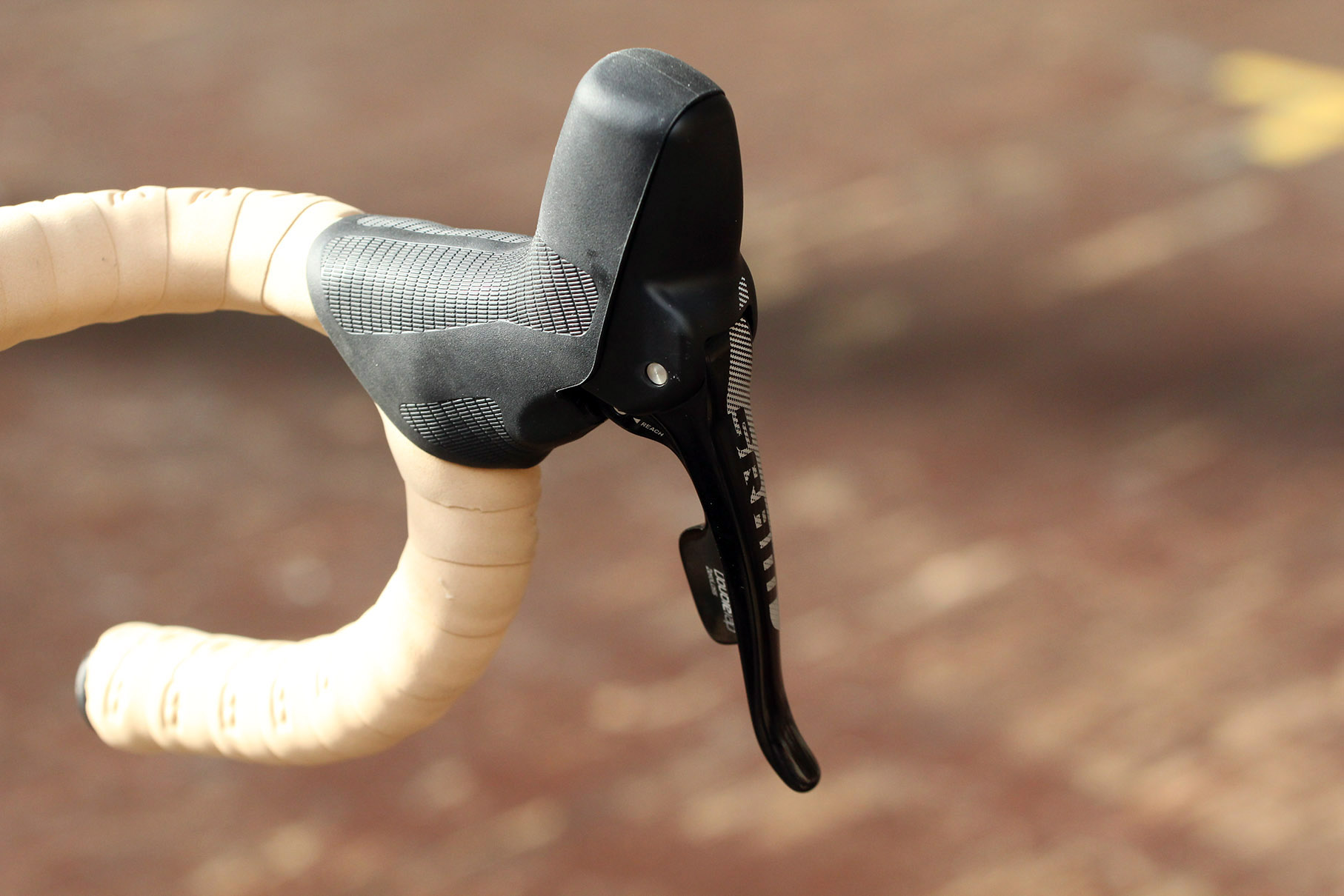
If you go for a hydraulic brake system, the shifters will be a different shape because they have to incorporate a master cylinder. The levers of the SRAM Rival 22 Hydro system (above, £284 per wheel) are chunky, though not as large as SRAM’s original hydraulic levers, and some people just don’t like the look of the tall front end. On the other hand, the high hood can be easy to grab, especially if you're riding with your forearms parallel to the road.
WWe like the Shimano 105 hydraulic disc brakes (RRP £500; typical price £336.49). The shifters (above) are more bulbous than the standard shifters, but not massively so.
Chainset
105 RRP: £149.99 | Typical price: £84.79-£103.32
Rival 22 RRP: £220 | Typical price: from £155.59
Both the Shimano 105 and the SRAM Rival 22 chainsets are made from aluminium with hollow arms to save weight (go up to SRAM Force and the cranks are carbon-fibre).
Shimano (above) now uses a four arm rather than a five arm spider to secure the chainrings, with uneven spacing between those arms. The idea is to provide the strength where it’s most needed while dropping the weight of the fifth arm. SRAM uses a five bolt system.
The Shimano 105 chainset has a reputation for being super-stiff. When we reviewed it we said, “Regardless of how much power you put through the cranks, there’s no detectable flex there whatsoever.”
Shimano lead the field here but we’ve been impressed by the SRAM Rival 22 chainset too. Our man Dave Atkinson reported, “I had no issues with derailleur rub under power which suggests [the chainset] is nice and stiff.”
You can get the 105 chainset in a standard 53/39-tooth option, semi-compact 52/36, and compact 50/34. There’s no cyclocross-specific option, though.
SRAM’s Rival 22 chainset (above) is available in 52/36, 50/34 and 46/36-tooth options. With both Shimano and SRAM, you can swap to other chainring sizes quite easily.
Shimano offers 105 cranks in 165, 170, 172.5 and 175mm lengths – which will cover the vast majority of people –while SRAM provides all of those plus 167.5mm and 177.5mm options.
The Rival 22 chainset is available in both 24mm and 30mm axle options whereas Shimano offers 24mm only. Whichever you choose, you obviously need to get the correct bottom bracket for your bike (105 £21.99, Rival 22 £29).
The 105 chainset we reviewed here on road.cc hit the scales at 737g while you’re looking at over 100g more for Rival.
Front derailleur
105 RRP: £34.99 | Typical price: from £21.18
Rival 22 RRP: £41 | Typical price: £34.99
SRAM boasts that you don’t need to adjust the position of your front derailleur (below) to avoid your chain rubbing on the side plates, no matter which sprocket you’re using. This results from what it calls ‘Yaw’ technology that has trickled down from its higher end groupsets.
Essentially, the front derailleur cage rotates slightly when you shift from the small chainring to the large one, so its angle relative to the chain remains the same.
When he reviewed SRAM Rival 22, Dave Atkinson said, “It's a bit of a fiddle to set up, but once you have it dialled in it works perfectly, and I didn't have any derailleur rub at the front even when I was crossing the chain on purpose.”
With 105 you’ll sometimes find that you need to trim the position of the front derailleur as you move the chain across the cassette.
When we reviewed 105 here on road.cc, we found that the lengthened link arm of the front derailleur (above) creates more leverage and therefore less effort is required for shifting.
“Couple that with a new spring mechanism and the shifting is smooth, fast and precise,” reviewer Stu Kerton said.
There’s not much to choose between them in terms of weight, the 105 front derailleur coming in at 88g on the road.cc Scales of Truth and the Rival 22 one a claimed 89g with a chainspotter included (to stop the chain coming off the inside of the inner chainring; you don’t get one of these with 105).
Rear derailleur
105 RRP: £52.99 | Typical price: £30.99-£42.99
Rival 22 RRP: £76 | Typical price: £58.99
We’ve been massively impressed by the Shimano 105 rear derailleur (below).
“The shifting is absolutely spot on… Up and down the cassette, the chain goes in a blur,” we said in our review.
We’ve not had any issues with SRAM Rival 22 shifting either.
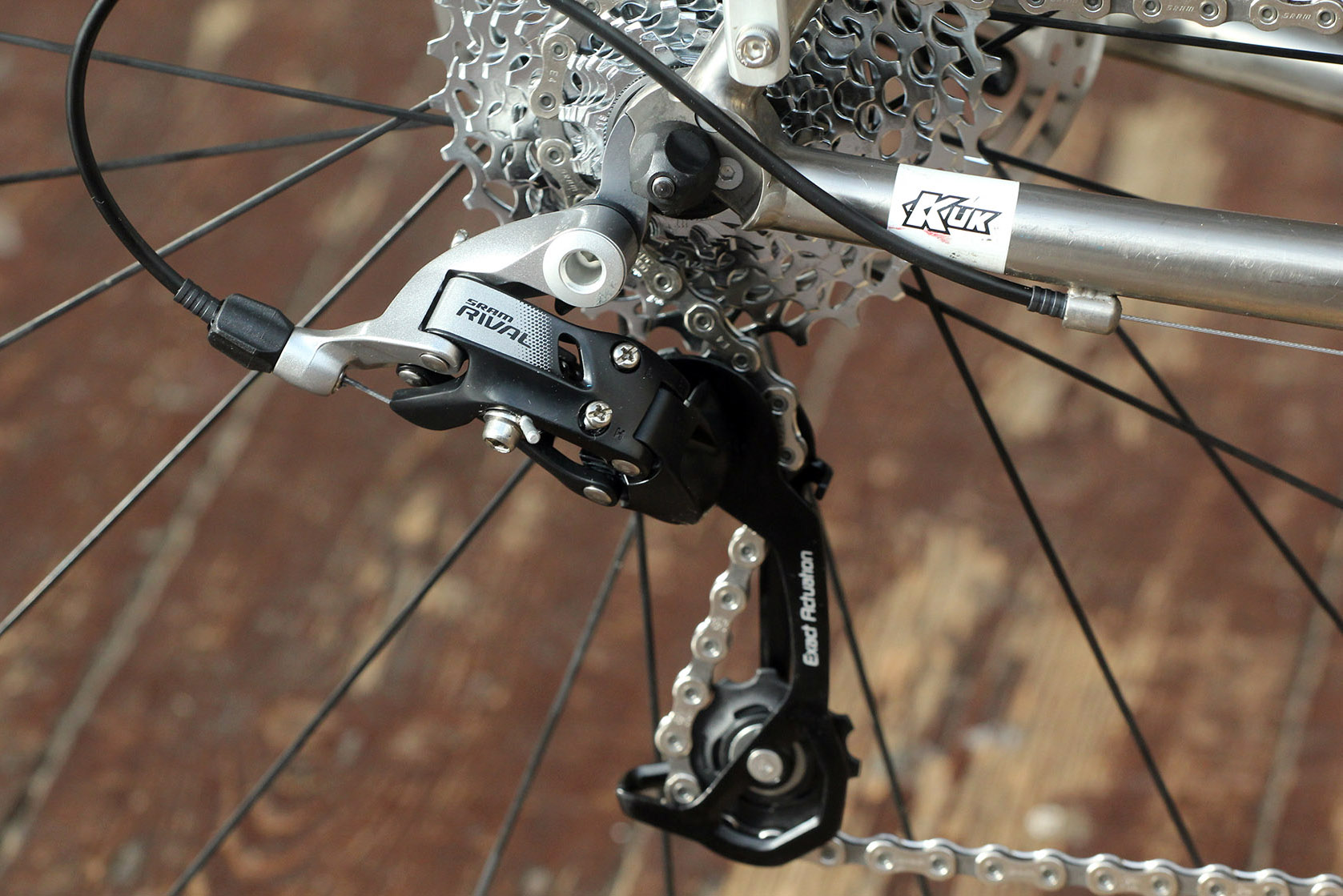
With both SRAM and Shimano, you need to choose the correct sized rear derailleur for the gears you are running. Shimano’s 105 GS rear derailleur and the mid-cage version of SRAM’s Rival rear derailleur (above) allow you to use a maximum sprocket size of 32-teeth.
We weighed a short cage Shimano 105 rear derailleur at 230g while the SRAM Rival 22 equivalent is a claimed 50g lighter.
Brakes
105 RRP: £100 pr | Typical price: £52.50 pr
Rival 22 RRP: £74 (pair) | Typical price: £58.98 pr
Shimano’s 105 twin pivot brake callipers (below) are exceptionally good, offering loads of power and plenty of control.
“Slowing rather than stopping can be achieved with just a couple of fingers applying pressure to the lever and it's easy to avoid locking a wheel,” we said in our review. “A new brake pad compound has been used, and while it's a small improvement, it does feel a little more grippy in both the wet and the dry.”
If you have a frame with direct mount points, you can use the BR-5810 versions (£39.99) built to the same SLR-EV design but with two frame mounting points rather than the traditional single.
There’s no direct mount option in the Rival 22 lineup but the dual pivot callipers come with very good SwissStop pads. Both 105 and Rival 22 are compatible with tyres up to 28mm.
The Shimano 105 brake callipers we weighed were 390g the pair while SRAM claims 300g for its Rival 22 brakes.
Both the Shimano 105 (above) and the SRAM Rival 22 groupsets include hydraulic disc brakes (see under 'Shifters', above) that are more powerful than mechanical rim brakes, and less affected by wet conditions. Obviously, you need the correct frame and fork to take these.
In terms of overall performance, they’re very similar.

“Shimano's units feel a bit more powerful overall but the SRAM brakes (above) are a bit more progressive through their range of power, so it's swings and roundabouts,” said Dave Atkinson.
“If I had to choose one or the other, the SRAM brakes would probably edge it. They're a bit more keen to squeak when they get wet, but in my experience there's less rotor rub after heating the discs up on a long descent.”
We’ve found that bleeding the SRAM brakes is a bit more of an involved process than it is with Shimano.
SRAM also offers hydraulic rim brakes (above, £254 per wheel, though you can now pick them up for just £156.49) that will fit to a standard (non-disc) bike, although we can’t say we’ve seen these fitted as original equipment on any bikes.
Cassette
105 RRP £49.99 | Typical price: £27.99 - £32.98
Rival 22 RRP £80 | Typical price: £41.59 - £66.79
Both 105 and Rival 22 are 11-speed systems, and each offers cassettes in various tooth ranges.
One SRAM cassette covers 11-36 teeth, although you’d have to use that as part of a 1x system with a specially designed rear derailleur.
You’re looking at weights from around 260g for both brands, depending on the size option you choose.
Chain
105 RRP £29.99 | Typical price: £18.99
Rival 22 RRP £19 | Typical price: £13.98
We’ve found the chains of both systems to be smooth and reliable, although the SRAM chain is easier to set up thanks to the inclusion of a PowerLock connecting link that doesn’t require the use of any tools. With Shimano (below), you have to use a connecting pin and a chain tool, or buy a connecting link separately.
A SRAM Rival 22 chain weighs a claimed 259g for 114 links while our Shimano 105 chain weighed 265g for 116 links, so they’re about the same.
Overall
Properly setup, both Shimano 105 and SRAM Rival 22 offer similar levels of performance to the top-level components from their respective manufacturers, it’s just that they’re a little heavier.
Each system has its strengths. We highly rate Shimano’s braking, for example, and we really like the Yaw technology that SRAM uses in its front derailleur.
By far the biggest difference that you’re likely to notice between 105 and Rival 22 is in the shifting, not in their level of performance but in the way that they’re designed to operate. You’ll probably adjust quickly to either shift system – most people do – but just make sure you’ve had a test ride before you lay down your cash.
We'd be interested to hear about the experiences of readers who have used both systems.
Shimano dominates the 2017 Tour de France - winning every stage and jersey
Shimano dominates the 2017 Tour de France - winning every stage and jersey
Home, and away
So this is it. This is where I’ll reside for the next two weeks. If I’m not sat on it I’ll be no more than ten feet away from it. And people say I’m afraid of commitment.
It should be fine, I’ve settled in having spent most of the last 6 months on this bike, it’s the cycling version of that dent in the sofa cushion. Bits have changed over time and stuff has been bolted on but the bones have stayed the same and it’s become an extension of me, it knows what is expected of it and up till now it has performed that task commendably. Faithful hound. It took a while to track down that creak but a bit of copper-slip on the seatpost clamp sorted it. I think that’s been the only problem.
The old Ultegra gears did their job of being covered in a Winter of crap before they were upgraded to the Di2 version when the sun came out, and my, aren’t electronic gears a revelation? Shifting, especially the front is a brainless activity, no need for finesse or that hard-wired old-school technique of backing off and being gentle with the gears, just push the button and pedal. By Day Whatever of the Transcontinental when I may have lost feeling in my fingers and changing gear is an unnecessary mental complication that finger-tip control is going to be a godsend.
The tri-bars are a more recent addition and the probably too few rides I’ve had on them have been pretty ok and the position isn’t too extreme, it’s more a comfort than a marginal gains aero position. I’ve set it up to replicate the hanging onto the sticky-outy 9 speed gear cables hand position that I spent a lot of time doing pretending to be that Dutch Pro on a long solo break back when I thought it was cool (It still is a bit).
The proper last minute addition has been the Praxis wheelset and Exposure lights, delivered at eleven at night with a week to go to the start. No panic then. DT Swiss internals in the rear mean proven longevity and performance and the front wheel has been rebuilt around an Exposure dynamo hub. 32 spokes too, Europe wide reliability, it better be as I’ve only ridden the wheels and checked the dynamo in a midnight ride up and down the seafront to bed things in. Ahem.
The front Wildcat bag holds stuff for the odd moments when we’ll be sleeping; bivvy-bag and silk liner, favourite warm beenie hat (mainly for psychological comfort), long sleeved merino top and Rapha padded gilet. The frame bag contains all the things that might be needed easily on the fly. Tools and random spares, a Busch & Muller USB-Werk cache battery to charge all the electronic devices via the dynamo when the light’s not being used, and the knotted tagliatelle of wires to deal with this. Elastic bands, gaffer tape. Toiletries (chopped in half toothbrush, chopped in half razor, for the legs), pills and potions. Small zip-tie Hiplock so bears don’t steal our bikes.
The Wildcat Tiger out the back carries the clothes, the one spare set of cycling kit and casual shorts and t-shirt for the rare few hours it might be nice to let everything breathe a little bit. Plus arm and knee warmers, long-sleeved jersey, gilet (reflective because of French rules), spare socks, long sleeved base layer (they say you pack your fears, I dislike cold), and Goretex jacket. SPOT Tracker strapped to the top for safety and dot watching. Also Miffy.
Here’s the bike tech rundown…
Frame - Kinesis GF-Ti Disc
Fork - Tracer Disc
Wheels - Praxis RC21 Road Wheelset, custom built with Exposure Dynamo hub
Chainset – Rotor
Chainrings – Praxis Compact 52/36
Bottom Bracket – Hope
Pedals - Shimano A600
Levers – Shimano Ultegra Di2 Hydraulic
Rear Derailleur - Shimano Ultegra Di2, long cage
Front Derailleur – Shimano Ultegra Di2
Cassette – Shimano Ultegra, 11spd, 11-32
Chain – KMC 11spd
Brake Calipers – Shimano RS785
Rotors – RWD (140mm rear, 160mm front)
Saddle – Fabric ALM
Seatpost – Fizik Cyrano
Stem – Fizik Cyrano
Handlebars – Black, shallow drop, from the shed
Tri-Bars – Profile Design T2+ DL
Handlebar Tape – Profile Design
Lights – Exposure Revo front with Red Eye rear
There are so many people to thank for getting me here, without them none of this would be in any way possible. It may be cheesy but I really can’t thank them enough and this is not some “please the sponsors” BS, these are good people, they have pulled all the stops out, they believe in me when sometimes I may not.
Rory at Upgrade for the Kinesis GF-Ti frame and fork and the Praxis Wheels and chainrings.
Madison for the Shimano Ultegra Di2 electronic wizardry.
Exposure Lights for the dynamo hub and lights.
Fabric for the saddle.
Bontrager for the tyres.
Beth at Wildcat for the bike-packing bags and customizing them to make sure the stitching and dry-bags matched my bar-tape.
Gore Bike Wear, I pretty much lived in that jersey for three months of training.
Morvelo for all of the clothing and the special ‘Fuck Cancer’ socks.
Specialized for the shoes and helmet.
And on a personal level, some names you won’t know who have all helped along the way, their quiet contributions have been a godsend and lifted me to crack a smile when spirits might have been flagging; Moose and Jo, Olly and Abby, Vic, Dalia, Alice, Adam, Andy, Rayments Cycles, and finally and especially my sister for all the cat-sitting and surprise food parcels.
Finally, sorry to all the people myself and Gavin (my Transcontinental pairs team-mate) have bored shitless over the last few months about this stupid thing. It’s not over just yet, you’ll have to endure all the stories when we get back, make the most of this couple of weeks of quiet.
All these people have done all they can, it’s up to me now.
Let’s go for a ride.
Beginner's guide to cycling shoes — the secrets of comfy feet
Proper cycling shoes help keep your feet comfortable, improve power transfer and let in air to cool your feet on hot days. They’re an under-rated part of the cycling wardrobe and needn’t cost the earth.
The key to the function of cycling shoes is the sole. Cycling shoes have soles that are substantially stiffer than those of regular shoes or trainers. They don’t need to bend for walking, so they can be very stiff. That spreads the force you’re putting on the pedals around your foot and stops your foot uncomfortably bending at the edges of the pedal.
Let’s take a look at cycling shoes from the sole up.
Soles
A cycling shoe sole is stiff because it’s made of some sort of rigid plastic, often reinforced with fibreglass or carbon fibre. Most cycling shoe soles have threaded inserts so you can attach cleats for use with clipless pedals, though there are a few retro-styled shoes with smooth soles for use with clips and straps.
There are two types of soles for clipless pedals. Road racing-style shoes have three threaded inserts for a cleat that sits on the outside of the sole. Mountain bike style shoes take a two bolt cleat that sits in a recess in the sole tread so that the shoes are easier to walk in when you have to get off the bike.
Shoes for three-bolt cleats are great for rides where you don’t get off the bike for more than a cafe stop. If you want to walk around in between periods on the bike, go for two-bolt shoes.
Three-bolt soles usually have a couple of lumps of rubber under the heel and toe to make it slightly easier to walk in them, but they only improve things a little.
Uppers
Cycling shoe uppers are made from many materials including real leather or suede; synthetic leather or suede; and nylon mesh. They are usually stitched together from various panels of material, but some high-end shoes have the upper moulded in one piece, which saves weight. Look for seams reinforced by double lines of stitching at the edges of the panels.
The main body of the upper will have padding, reinforcement and stiffening in various places. The most significant stiffening is usually around the heel. This heel cup is shaped to hold your heel down in the shoe so it doesn’t slip on the upstroke as you pedal. The toes are usually reinforced against scuffing, especially in shoes intended for mountain biking. There’s usually padding at the heel and top of the shoe for comfort.
Some high-end shoes have uppers that can be moulded to more precisely fit your feet. Your dealer warms them, usually in a special oven, and then you put them on and buckle them up. As they cool they’ll take on the shape of your feet.
Closures
To keep them on your feet shoes need to be fastened. The old school way of doing this was with laces, but most cycling shoes now use Velcro straps, buckles, dials or some combination.
Shoes with laces will usually have a Velcro strap to cover the knot or some sort of ‘speed laces’ with a buckle to hold the laces in place and a place to tuck the free end. Either way, you don’t want any dangling string that can get caught in your chain or wrapped round the pedal axle so be sure to there are no loose dangly bits to get snagged. They may be a bit fiddly, but laces allow you to spread the tension evenly over your foot, which can make lace-up shoes very comfortable.
Velcro straps are the cheapest option. There are usually three along the top of the foot and you simply pull them tight and cinch them down. They’re quick and easy and they hold the shoe firmly im place, but as there are only three of them it’s easy to overdo tightening one and end up feeling like part of your foot has been clamped. Tighten them gently.
On more expensive shoes you’ll find a ratchet buckle replacing the top strap. The advantage of a ratchet is that it’s very easy to adjust the tension as you ride, either to tighten it for a big effort or loosen it off if your feet are getting tired.
On some high-end shoes you’ll find one or two dials that tighten very fine plastic-covered steel cables. In effect this is the high-tech answer to laces, spreading the tension around the top of the foot. The idea first appeared as the Boa closure; several shoe manufacturers now use it or their own versions. Like ratchets, wire-dial closures allow you to adjust the tension while you ride.
Insoles
Inside the shoe you’ll find an insole that cushions your foot and spreads the loads around. These vary in sophistication from a simple layer of foam to liners with multiple densities and adjustable support to heat-mouldable insoles that can be shaped to fit your foot. You can also buy new insoles to improve the fit and comfort of your shoes.
Ventilation, warmth and waterproofing
All that pressure through your feet can lead to them getting hot on warm days. As well as weight reduction, that’s why some shoes use lightweight mesh to let air in and cool your feet. Many shoes also have ventilation holes in the soles, though these can make you too cold in the winter. A strip of duct tape fixes that.
Speaking of winter, you can get shoes specifically-designed to keep your feet war and dry during the cold and wet months. They usually have a breathable, waterproof Gore-Tex liner and a layer of insulation. That means they’re not cheap, but they’re worth it if you want to carry on riding through the winter. Pro tip: buy them in the spring when they’re heavily discounted and put them away for winter.
Women’s shoes
In general, women have narrower ankles than men and smaller feet. Women’s shoes are therefore a slightly different shape, and some models are available in smaller sizes than the 36 that’s usually the lower limit of men’s ranges.
What do you get for your money?
It pays to shop around; shoes are rarely sold for full RRP. You can pick up a pair of three-strap shoes with fibreglass-reinforced plastic soles for as little as £25. At actual prices of around £50 you start getting ratchet buckles for easy tension adjustment.
Want something stiffer and lighter? The cheapest shoes we’re aware of with carbon fibre soles will set you back £65, and you don’t have to pay much more for heat-moudable soles.
From there on up shoes generally get more orientated toward racing, with a few exceptions like winter boots and expedition mountain bike shoes. That also means soles usually get stiffer and the whole shoe lighter. The light, high-strength materials needed to achieve that are expensive, which pushes up the price of the shoes. Won the lottery? Check out the handmade Assos G1 shoes with carbon fibre soles, kangaroo leather uppers, Boa closure and every clever detail you can think of. A snip at £370.
Three great shoes for beginner cyclists
Muddyfox RBS100 — £30
My eyes! It's okay, these budget road shoes from Muddyfox are also available in a snazzy white, red and black colour scheme for those who aren't sufficiently extrovert for screaming neon.
They have a two-strap closure, with a very broad strap across the top to spread the tension over your foot, and Amazon reviewers say the sole is plenty stiff. For just £30, they do the job.
Spiuk Nervio — £41.99
Understated to the point of stealth, these lace-up mountain bike shoes have a grippy sole that will take SPD cleats, or you can just leave the cover plate and use them with flat pedals.
Giro Petra VR — £62.99
While there's always going to be a time and a place for super-stiff lightweight road shoes, sometimes that's not always what's required, or desired. The Giro Petra VR Shoes are designed for those times when there's going to be a fair bit of walking as well as riding, and when a more low-key looking shoe may be the thing. But they're still technical.
Officially in Giro's 'dirt' section of the company's website, the Petra VR is more a touring or casual shoe, rather than a technical mountain bike shoe. They lace up, have a Vibram sole, and feature a removable plate under which lurks SPD attachment points, but they are styled much more casually.
The men's equivalent is the Rumble VR.
Read our review of the Giro Petra VR
Assos G1 — £369.99
Only kidding!
Shimano XC7 SPD shoes
Not long ago we tested the Shimano RC7 road shoe and found it to be excellent. Now we've got hold of the XC7 mountain bike shoe at the same level, and you'll never guess what: this one is excellent too. It's roadie-looking enough for the tarmac with enough versatility for the dirt too; cyclo-cross, gravel riding and mountain biking are all within its remit. As such, it's almost one shoe to rule them all. You can pretty much do anything with these.
At first glance you might be forgiven for thinking the XC7s are a road shoe: with a Boa closure and an unfussy, shiny upper they have a pretty racy look. Unlike the RC7s, which have a very stiff full-carbon sole, the XC7s have a carbon-reinforced midsole that's a bit more forgiving. That means if you're off the bike jumping the hurdles in a cyclo-cross race or pushing up an off-road climb that's defeated you, there's enough flex to make walking feel pretty normal.
> Find your nearest dealer here
There's a full Michelin rubber outsole, too, to aid off-bike grip, and you can fit two studs at the front for extra grip. The SPD cleat is recessed enough into the sole that you get plenty of purchase from the rubber on cafe floors, although the XC7s are still a bit click-clacky.
These shoes are really, really comfortable. Shimano has recently changed the last it uses to make its shoes, and whatever it's done has worked: the XC7s have proved to be fantastic from the off. Shimano used to offer custom fit at this level, but I haven't missed it: the synthetic leather outer is just right out of the box.
I completed the 200km Dirty Reiver gravel ride in these (10 hours' riding time) and a 300km ride to the coast and back (over 12 hours in the saddle) and foot comfort was never an issue. With the more flexible sole and the smaller contact area of the SPD system over road cleats there was always the possibility of pressure hotspots, but I never had any problems with these shoes and for the time off the bike they're much more practical than full-fat road shoes.
In hot weather the large mesh vent at the front does a good job of keeping your feet ventilated; when it's wet or cold you'll want to fit a neoprene toe cover as cold air and water get in very easily there. Foot retention is good, with the Boa SP1 wire system easy to adjust, and Shimano uses a cat's tongue fabric on the heel cup to prevent ankle lift.
Most of the time these XC7s are indistinguishable from a mid-range road shoe. At 796g the pair (size 48) they weigh about 200g more than the RC7s we had in the same size, but they're hardly heavy, and functionally you only notice the extra flex when you're really going after it. At the same time they're easier to walk in, look good, and can be worn for your off-road pursuits too.
When SPD shoes are this good, there's a decent argument for just wearing them all the time. Get yourself some single-sided road SPDs like Shimano's A520 for your road bike, and double-sided ones for your 'crosser, or commute bike, or mountain bike, or gravel bike, or whatever. Okay, if you're racing you'll probably want something a bit stiffer (and lighter), but for most types of riding these are just the ticket: well made, comfortable and versatile.
> Buyer's Guide: Cycling shoes
Shimano shoes have always sized up a bit small, and these are no exception. I have size 47 feet and a 48 in these is just right. If you can't try them on before you buy, it's best to size up.
Verdict
Fantastic do-anything SPD shoes that'll handle sportives to mountain bike races and everything in between
road.cc test report
Make and model: Shimano XC7 SPD shoes
Size tested: 48
Tell us what the product is for, and who it's aimed at. What do the manufacturers say about it? How does that compare to your own feelings about it?
Shimano says: "The XC series is designed from the ground up for cross-country and cyclocross performance. Designed with an ultra-rigid, lightweight carbon fiber reinforced midsole and a supple high-density synthetic leather upper, the new XC7 delivers race-ready pedaling efficiency and all-day comfort.
"The Boa IP1 dials allow a highlytunable fit and the Boa Powerzone wire guide is adjustable to help maintain consistent tension along the top of the foot. Boosting performance on and off the bike, the XC7 features an exclusive outsole designed in collaboration with Michelin. The full-length dual-density rubber construction increases grip and durability and the tread pattern is specifically designed for mudshedding, helping to maintain lightweight performance even in adverse conditions."
Tell us some more about the technical aspects of the product?
Shimano distributor Madison lists these features:
Off-road racing shoes built for maximum comfort and performance
Ultra-rigid, lightweight carbon fibre reinforced midsole
Supple high-density synthetic leather with perforated venting for superior fit
Boa IP1 dials with Power zone wire guide and front strap hold foot securely
Adaptable cup insole
Exclusive Michelin high-traction, mud-shedding tread pattern outsole
Dual density rubber compounds provide the right balance of grip, durability and flexibility
Rubber anti slip arch outsole pattern
They size up small, so buy a euro size bigger than normal.
How easy is the product to care for? How did it respond to being washed?
Upper is easy to clean.
Tell us how the product performed overall when used for its designed purpose
Really good all-purpose shoes.
Tell us what you particularly liked about the product
Comfort, performance.
Tell us what you particularly disliked about the product
Nothing.
Did you enjoy using the product? Yes
Would you consider buying the product? Yes
Would you recommend the product to a friend? Yes
Use this box to explain your score
Great all-purpose shoes. Don't think they're just for mountain biking, you can do almost anything in these.
About the tester
Age: 43
I usually ride: whatever I'm testing... My best bike is: Kinesis Tripster ATR, Kinesis Aithein
I've been riding for: Over 20 years I ride: Every day I would class myself as: Experienced
I regularly do the following types of riding: road racing, time trialling, cyclo-cross, commuting, club rides, sportives, general fitness riding, fixed/singlespeed, mountain biking, Mountain Bike Bog Snorkelling, track
Fantastic do-anything SPD shoes that'll handle sportives to mountain bike races and everything in between
First Look: Shimano RT5 road shoes with recessed cleats
First Look: Shimano RT5 road shoes with recessed cleats
Trip Advisor
It’s a bit tricky knowing what to pack for a two week race across Europe. You’ll need clothes for all sorts of weather, hot, even hotter, cold, wet, even wetter and all the bikes spares to cover the usual mechanicals, and then some extra bits for the unusual mechanicals. Then there’s the day-to-day ephemera to pack in and maybe that little special thing just to make life a little bit nicer when you’re having a bit of a moment. I have always been a serial over-packer whenever I go away, all the kit, spare waterproof, every pair of socks I own, just in case. Venturing into long-distance riding, bike-packing and finally the Transcontinental soon makes you pare down to what you really need. It’s actually quite cathartic, and you get used to the smell. There was room to fit more into my frame-bags and then again I could have packed less as there were a lot of things I didn’t use, I did choose things that could have been considered luxuries but their psychological effect was worth their minimal weight and size. Hello old and loved pink beanie hat that came in handy for keeping warm when sleeping on benches. And was a little hug.
There was a system to packing the frame-bags, sleeping stuff in the front; bivvy bag, silk liner and merino top don’t weigh much so affect the bike’s handling little. The Goretex and warm gloves went in there too for quick access, and a double plastic bag with the Transcontinental rule book, insurance details and doctors note. Day-to-day bits such as the Busch & Muller USB-Werk, small dry-bag of tools, inner-tubes, small dry-bag of electrics gubbins, zip-tie lock, proper pump (with lengths of gaffer tape rolled around it) and Gerber tool all fitted in the frame bag. Passport in the slim pocket on the reverse side. Spare cycling clothes and well wrapped Di2 charger fitted easily in the seat-bag out the back. None of this would ever pack the same way twice leading to an ugly baggage profile, this needs practise.
If you can pick something that can perform two uses then do that. I came to love the Rapha merino long-sleeved tee and Brevet Insulated Gilet for both wearing as intended and then sleeping in. And they were both light and easily squashable, the same with the Gore long-sleeved undervest, included for possible colder days on the bike it came in handy for off-bike use when walking around in or for warmth when sleeping although the merino top was more snuggly.
Apart from inner-tubes my pairs mate and I didn’t have to resort to any of the random bolts, screws, chain-links, brake-pads and knick-knacks we’d packed as bike spares and the only maintenance we did was to oil the chains twice. But then we only made it as far as the edge of ‘safe’ Europe and the stories we saw of those that rode further east suggested that we might have to rummage into the bags of bits as poor roads and unexpected WTF incidents took their toll on bikes and bodies.
As far as we got everything worked perfectly with no annoyances or niggles, well, the seatpost clamp started creaking again, but that eventually faded into the white noise of travel. The Kinesis GF_TI was a great bike to take on the race, stable enough to remain controllable on the vast array of tarmac surfaces, take gravel roads and worse in its stride and almost fall asleep on (maybe actually fall asleep on, who knows?) without crashing, yet nimble enough to be able to have giggly fun whilst fully loaded on long switchback descents. I may have patted it on the stem as you might a well performing horse’s neck at one point. What happens on tour…
Shimano hydraulic discs came into their own in this sort of caper, I am usually ambivalent in the whole disc vs rim brake debate but I couldn’t imagine trying to ride the Transcontinental on rim brakes. Fingertip control, wet or dry, not having to desperately haul on levers to slow up a heavily laden bike, especially when a little weary, makes discs not an expensive indulgence but an essential. Also Di2 is amazing and worth the cost when tired, being able to change gear with just a push of a button instead of having to manhandle a lever sideways makes a big difference especially when feeling starts to fade from the fingertips with the infamous Cyclist’s Palsy after a few days.
The Exposure Revo front dynamo light provided more than enough light at a max of 800 lumens even when a bit broken and eyes stopped working, and the fact that it stayed lit for up to an hour after stopping was handy for safety too, although it needed to be covered when trying to be a little hidden when dong a cheeky bivvy behind the bins. The Red Eye rear light was bright enough to burn the retina when tucked in behind your team-mate and made our supplementary rear lights redundant. Swap the connectors over on the hub onto a wire to the Busch & Muller USB-Werk tucked in the frame-bag and the variable current from the dynamo could be magically converted to a form of juice that the Garmin could charge on all day, as could the phone or power bank. This system takes self-sufficiency to a whole new level and it’s possible to travel for days without having to go near a plug to charge today’s necessary devices, although that opportunity is always taken.
The Praxis RC21 Wheelset took everything in its stride, the carbon rims noticeably taking the edge off stuttery tarmac and with 32 spokes they were as tough as old boots, worthwhile when you might lazily crash through potholes when tired and paying less attention and have to deal with roads that are significantly more off-road than on. The Bontrager R3 Hard-Case Lite 700x32 tyres have become a favourite rubber and something I’d choose again. Considering the surfaces we covered I’m not sure I’d want to run anything slimmer, the TCR rider we bumped into that had just done over 20km of gravel road on 25s certainly looked like he just had. These were standard tubed tyres and I had no problems although Gavin was running the same wheels and tyres and had several punctures, most of those down to faulty tubes though and that somewhat awkward “I’m not coming back down the mountain to help” situation. I’m aware of the tubeless option and I use it on my MTB where it’s a no-brainer and people have already asked why I didn’t choose the road version. I think it’s a great idea but when it goes wrong it goes very very wrong, and not something I want to deal with in the wilds, you can buy and fix normal tyres and tubes anywhere.
The only clothes I took that weren’t intended to be used for cycling time were the Rapha Touring shorts and Morvelo tech-tee, both were small and light enough to be packed away at the bottom without much notice but useful either end of the race when travelling and needing to look normal. Gavin threw the old trainers he wore to the start in the bin, other riders buy clothes at the finish to get home in. These and a spare pair of not ruined with dirt sweat tears and road grime socks. I have standards. The Specialized S-Works 6 XC MTB shoes were okay enough to walk about in that I didn’t need to take flip-flops or any of the other lightweight foot attire that other long distance cyclists may carry, and if you take the cleats out you can safely get through airport security with just an odd look. They didn’t half stink though.
This is by no means a definitive list of what you should take if you want to do something like this, this was my first attempt at any ride of this magnitude so there’s lessons to be learnt and trimming to be done, we all have our own likes and foibles, and we pack to our fears and all that. If I had to do it all again tomorrow I’d run pretty much exactly the same kit but have a think about the including any of the items I didn’t use but might actually need in an emergency. I’d probably buy a sleeping mat for a little bit of nicer bivvy experience, when you’re tired enough a concrete floor can be comfortable, until about 2am.
Here’s a list of All The Things, for those that like lists...
Bike
Fork - Tracer Disc
Wheels - Praxis RC21 Road Wheelset, custom built with Exposure Dynamo front hub
Tyres - Bontrager R3 Hard-Case Lite 700x32c
Chainset – Rotor
Chainrings – Praxis Compact 52/36
Bottom Bracket – Hope
Pedals - Shimano A600
Levers – Shimano Ultegra Di2 Hydraulic
Rear Derailleur - Shimano Ultegra Di2, long cage
Front Derailleur – Shimano Ultegra Di2
Cassette – Shimano Ultegra, 11spd, 11-32
Chain – KMC 11spd
Brake Calipers – Shimano RS785
Rotors – RWD (140mm rear, 160mm front)
Saddle – Fabric ALM
Seatpost – Fizik Cyrano
Stem – Fizik Cyrano
Handlebars – Black, shallow drop
Tri-Bars – Profile Design T2+ DL
Handlebar Tape – Profile Design (needs burning)
Lights – Exposure Revo dynamo front with Red Eye rear
Frame bags
Wildcat Tiger seat pack
Lion handlebar bag
Custom Ocelot frame bag and pink dry bags.
Clothing
Morvelo Superlight Jersey x 2
Morvelo and This Is Cambridge short sleeved undervest
Gore long-sleeved undervest
Morvelo Nth Series bib short x 2
Giro Zero II and LTZ II Road Cycling Mitts
Specialized Deflect gloves
Morvelo Long Sleeved Jersey
Rapha lightweight reflective gilet
Rapha Brevet Insulated Gilet
Gore Oxygen 2.0 Goretex Active Jacket
Morvelo arm-warmers
Morvelo knee-warmers
Morvelo arm-screens
Morvelo ‘Fuck Cancer’ socks x 3
Specialized S-Works Prevail helmet
Specialized S-Works 6 XC mountain bike shoes
Oakley Radar sunglasses
Hello Kitty Buff
Lucky pink fleece beenie for sleeping in
Rapha Touring shorts
Morvelo tech-tee
Rapha long sleeved merino t-shirt
Electrics
Garmin 820
Busch & Muller USB-Werk
Exposure Tracer rear light
Lezyne Zecto LED Light
Anker PowerCore 10000 power bank for phone/Garmin
EU plug to USB adapter
Charging leads for phone and Garmin
Sleeping
Alpkit Hunka XL bivvy bag
Rab silk liner
Bits
Specialized multi-tool
Rapha tyre levers, because they’re pink
Gerber Crucial Multitool
Zefal HPX frame pump (stored in frame bag)
4 inner-tubes
Park tyre boot
Park Super Patches
Tip-top puncture repair kit
Zip-ties
Latex gloves
Hiplok Z-LOK Cable Tie Lock
Alpkit folding titanium spoon
Random nuts, bolts and chainring bolts
Specific Torx key to fit chainring bolts
Spare disc pads
Mini pot of chain oil
Clif Shot blocks
Petzl headtorch
Velcro straps
Silicone wrist band
Safety pins
2Toms Butt Shield Roll On chamois cream
Sudocrem
Carmex lip balm
Mini toothpaste
Chopped toothbrush
Mini roll-on deodorant
Miffy
Here’s the stuff that didn’t get touched.. Morvelo arm-screens, Exposure Tracer rear light, Lezyne Zecto LED Light, Specialized Deflect gloves, Notepad and pen (I used the Notes on my iPhone instead, and used photos as aide-memoire), random nuts, bolts and chainring bolts, specific Torx key to fit chianring bolts, spare disc pads, Clif Shot blocks, Park tyre boot, Park Super Patches, Tip-top puncture repair kit, 3 of the 4 inner tubes (I gave one to Gavin), zip-ties, latex gloves, Petzl headtorch, old timing chip velcro straps and a silicone wrist band for attaching/bodging situations, safety pins
Big thanks to all of these people for keeping me rolling, I hope you don’t want any of it back, there’s further adventures to be had…
Upgrade for the Kinesis GF-Ti frame and fork and the Praxis Wheels and chainrings.
Madison for the Shimano Ultegra Di2 electronics and hydraulics.
Exposure Lights for the dynamo hub and lights.
Fabric for the saddle.
Bontrager for the tyres.
Wildcat for the custom bike-packing bags.
Morvelo for all the clothes and the special socks.
Specialized UK for the shoes and helmet.
Your complete guide to Shimano wheels
We’ve previously taken you through the wheel ranges from Mavic and Fulcrum, now it’s time to turn our attention to Shimano’s rather large offering of wheels. Shimano wheels are frequently specced by bike manufacturers and they’re popular aftermarket upgrades, no doubt helped by being a common sight in the professional peloton - it supplies wheels to more teams than any other brand.
- Your complete guide to Shimano groupsets
Dura-Ace R9100 and R9170 wheelsets
Shimano unveiled new Dura-Ace wheels with the launch of its latest groupset last summer. The new C40 and C60 wheels have a fashionably wide rim designed for improved aerodynamics.
The rims have a wider profile than the previous generation Dura-Ace wheels, following the current trend for bulbous profiles that are more stable in crosswinds than the older V-shape rims. Each is available in a clincher or tubular version, so you can emulate the pros if you want or be sensible and fit some inner tubes.
Alternatively, the R9170 versions of the C40 and C60 wheels are designed solely for disc brakes and use a 12mm thru-axle hub and a rim that is tubeless compatible. There’s also a tubular option as well.
If you want the lightest option, the R9100-C24 has a very shallow 24mm rim that keeps the weight low, making it an ideal wheelset for climbers. It's virtually unchanged from the previous R9000-C24 in case you're wondering.
Clincher
- R9100 C24 Clincher £999.98
- R9100 C40 Clincher £1,499.98
- R9170 C40 Clincher Disc £1,999.98
- R9100 C60 Clincher £1,599.98
- R9170 C60 Clincher Disc £2,099.98
Tubular
- R9100 C40 Carbon Tubular £2,299.98
- R9170 C40 Tubular Disc £2,399
- R9100 C60 Carbon Tubular £2,399.98
- R9170 C60 Tubular Disc £2,499.98
Shimano’s previous Dura-Ace R9000 generation wheels are still available if you shop around. There’s the C24 (£1,999.98) and C75 (£1,699.98), the classic C50 (£1,599.98) and finally the C35 (£1,499.98).
- Review: Shimano Dura-Ace C24 Carbon Clincher wheelset
Ultegra RS700 and RS770 wheelsets
Along with the latest version of Ultegra 8000 launched this year, which follows closely in the wake of new Dura-Ace, Shimano released updated wheels. It’s offering two wheelsets under the Ultegra label, the carbon-laminate RS700 for rim brakes (£749.98) and the RS770 (£799.99) for disc brakes.
Both are tubeless-ready and the later is compatible with thru-axles. There are also new hubs to shed about 60g of weight compared to the old 6800 wheels, and there’s a lighter carbon layup in the new rims. Claimed weight is 1,568g for the rim brake wheels and 1,639g for the disc wheels.
The previous generation Ultegra 6800 wheels are still available. These have made with a similar carbon composite construction to that found on the Dura-Ace C24 wheels. You can read our review of the wheels here.
RS81 carbon laminate wheelsets
The RS81 series borrows features and technology from the range-topping wheels in Shimano's range but offers it in a more affordable package. There are also three rim depths to suit your requirements and budget.
RS, by the way, stands for Road Sport, and is Shimano’s attempt to offer top-level performance at a great price, and are ideal for racing and training duties.
The aluminium brake track with a carbon outer means you’re assured of reliable braking performance in all weathers and don’t have to change the brake blocks on your bike to upgrade to these. The hubs have extra wide flanges to build a stronger wheel and Shimano’s OptBal Spoke System is intended to increase the rigidity of the wheelset.
RX830 35mm Tubeless Disc Brake wheelset £799.98
The RX830 combines Shimano’s proven carbon laminate technology in a 17mm wide (internal) tubeless-ready rim optimised for disc brakes, so there’s no brake track on these rims. The hubs are cup and cone and ready for disc brakes with conventional quick release axles - so you’ll only see these on cheaper or older generation rim brake bikes, as most disc brake bikes are moving over to thru-axles. Shop around and you can find them discounted, as is the case for most of the wheels here.
RS610 24mm Tubeless wheelset £324.98
This is one of Shimano’s most affordable wheels to utilise its carbon laminate rim technology, and the rim is also tubeless-ready. They feature an offset rim design with wide flanges to provide a stronger wheel and the hubs are compatible with 10- and 11-speed cassettes.
RX31 Road Disc Brake wheelset £299.98
The RX31 was one of the very first dedicated disc brake wheelsets available when disc brakes started appearing on production road bikes a few years ago. Shimano has built a solid wheelset around 24mm profile aluminium clincher rims with 24 stainless steel butted and bladed straight pull spokes in each wheel to best deal with the disc brake forces. Hubs are now thru-axle compatible with contact sealed bearings with an 8,9,10 and 11-speed compatible freehub.
- Review: Shimano RX31 wheelset
RS330 Alloy clincher wheelset £299.98
Looking like a good upgrade option for many entry-level bikes, though you’re likely to see these wheels specced on a lot of mid-range bikes, the RS-330 uses a lightweight aluminium rim with a 30mm depth providing good aerodynamics, making them ideal for anyone wanting to inject a bit more speed into their riding.
RS21 Alloy clincher wheelset £279.98
This wheelset uses Shimano’s proven hub design with angular contact bearings and a wide flange for extra wheel strength, laced to 24mm high rims with a handy wear indicator. Steel butted and bladed straight pull spokes with a 2-cross lacing pattern improve wheel rigidity.
RS11 Alloy clincher wheelset £199.98
You’re getting a bit more technology in return for your extra £50 over the RS010 wheels below, with a 24mm profile aluminium rim and bladed stainless steel straight pull spokes - 16 up front and 24 our back. The hubs have labyrinth sealed angular contact bearings and low-friction seals for low rolling resistance and good durability.
RS010 Alloy clincher wheelset £159.98
The RS010 is the most affordable in the RS line and uses much of the same technology as you'd expect higher up the range, and is a really good entry-level wheelset. You get the same 24mm rim depth as the more expensive wheels with 20 front spokes and 24 rear spokes and quick release hubs with wide flanges, contact bearings and steel axles.
RX010 Centre Lock Disc wheelset £199.98
An affordable disc brake wheelset with 28 spokes in each wheel for extra durability and a 24mm rim for low weight, combined with Centre Lock disc rotor mounting system. The rim width is recommended for 25 to 38mm wide tyres. The hubs use regular quick release axles.
Shimano’s most affordable wheelset and one you’ll see on a lot of entry-level road bikes with 8 and 9-speed drivetrains. Combining 24mm aero and anodised rims with 20 black chrome plated spokes in each wheel and weighing 1,884g, it’s a solid wheelset.



